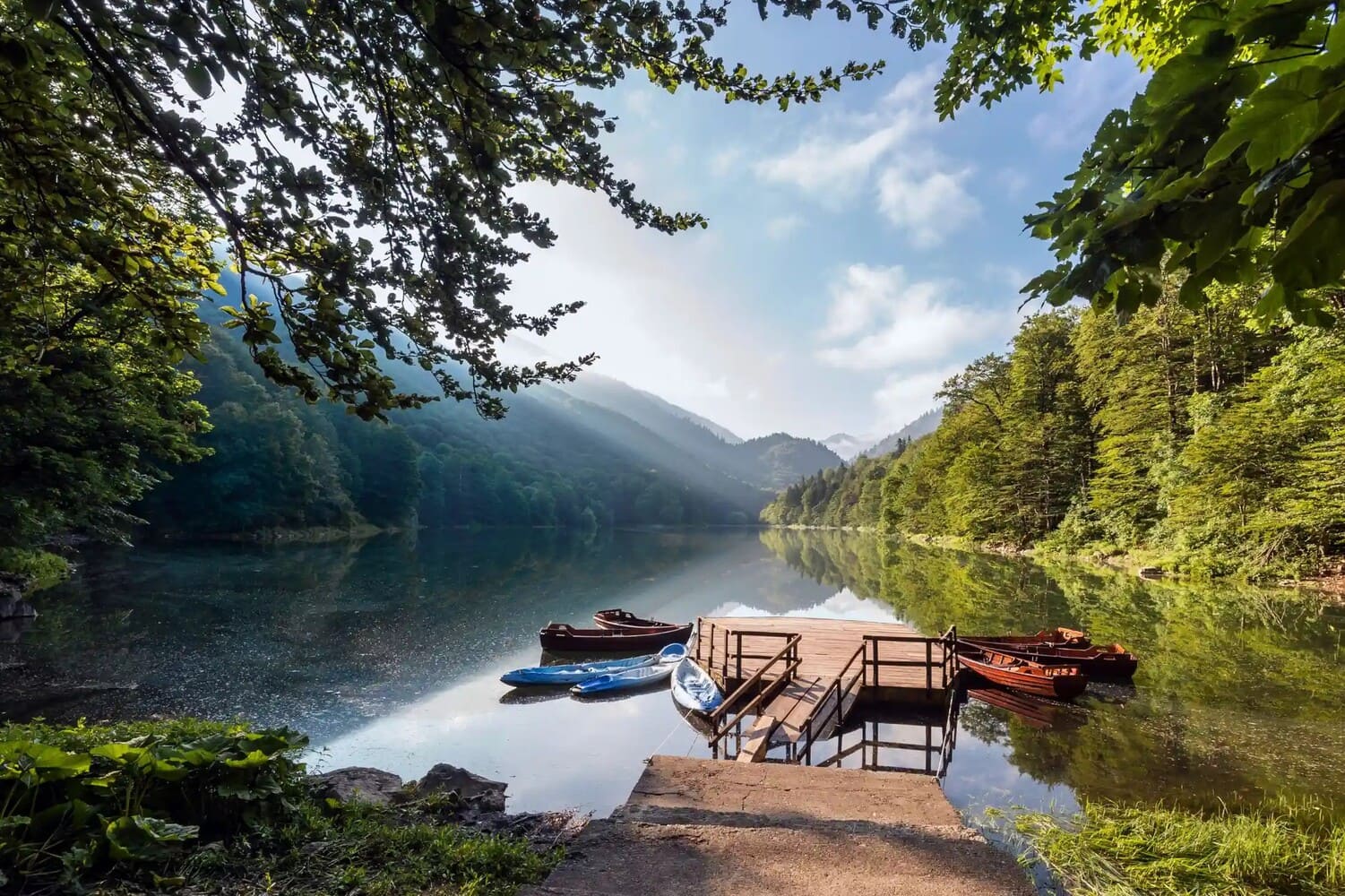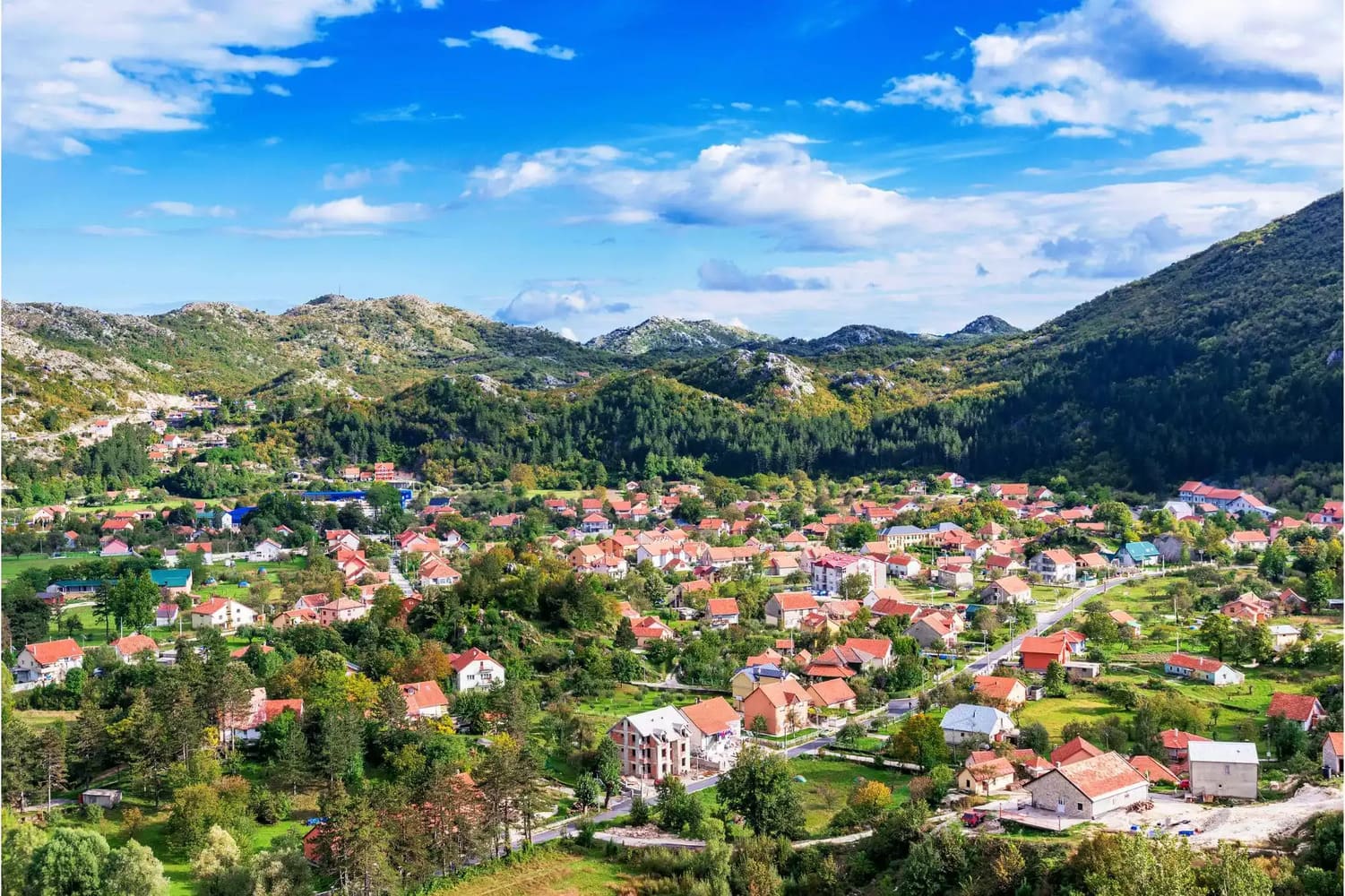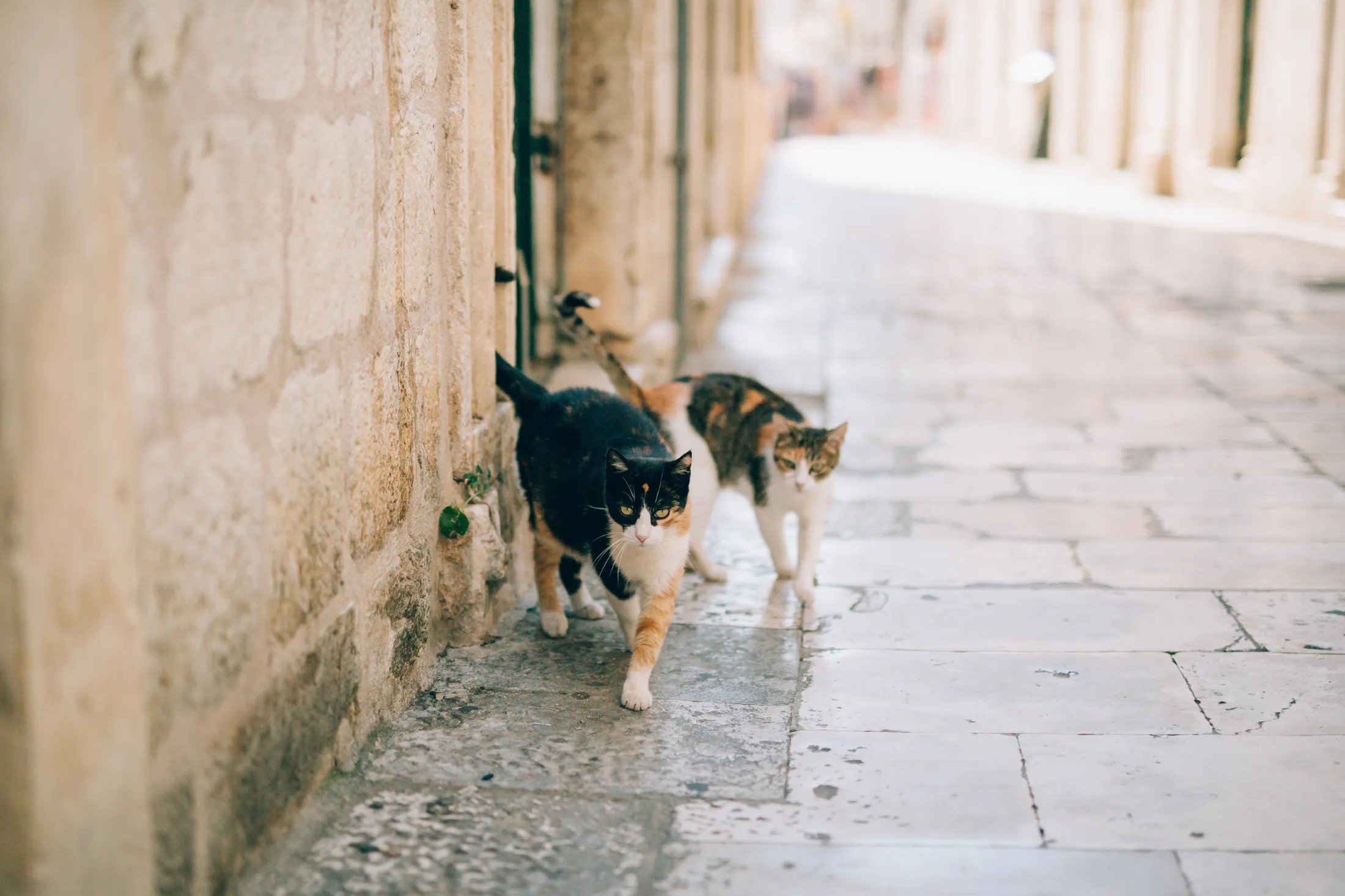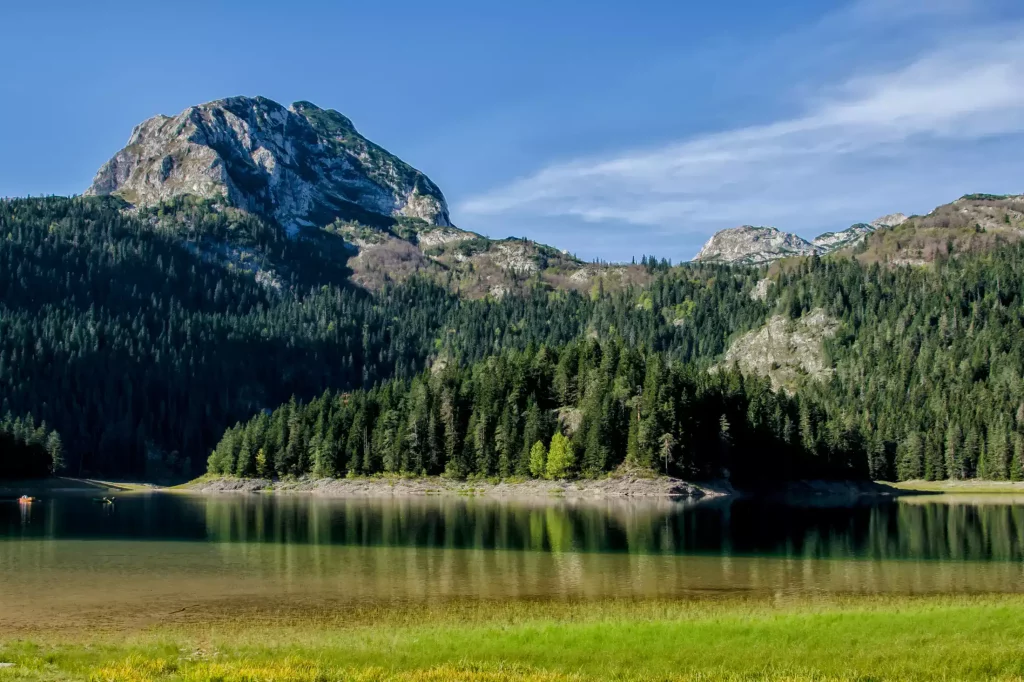Nestled in the heart of Montenegro, Biogradska Gora National Park stands as a testament to the enduring beauty of nature. This hidden gem, one of Europe’s last three primeval forests, offers a unique blend of ecological diversity, cultural heritage, and breathtaking landscapes. Thinking of going on holiday in Montenegro? Podgorica is a perfect place for staying and being close to both southern and northern regions. We recommend staying at CUE Podgorica, one of the best hotels the country has offer.
The Splendors of Biogradska Gora National Park
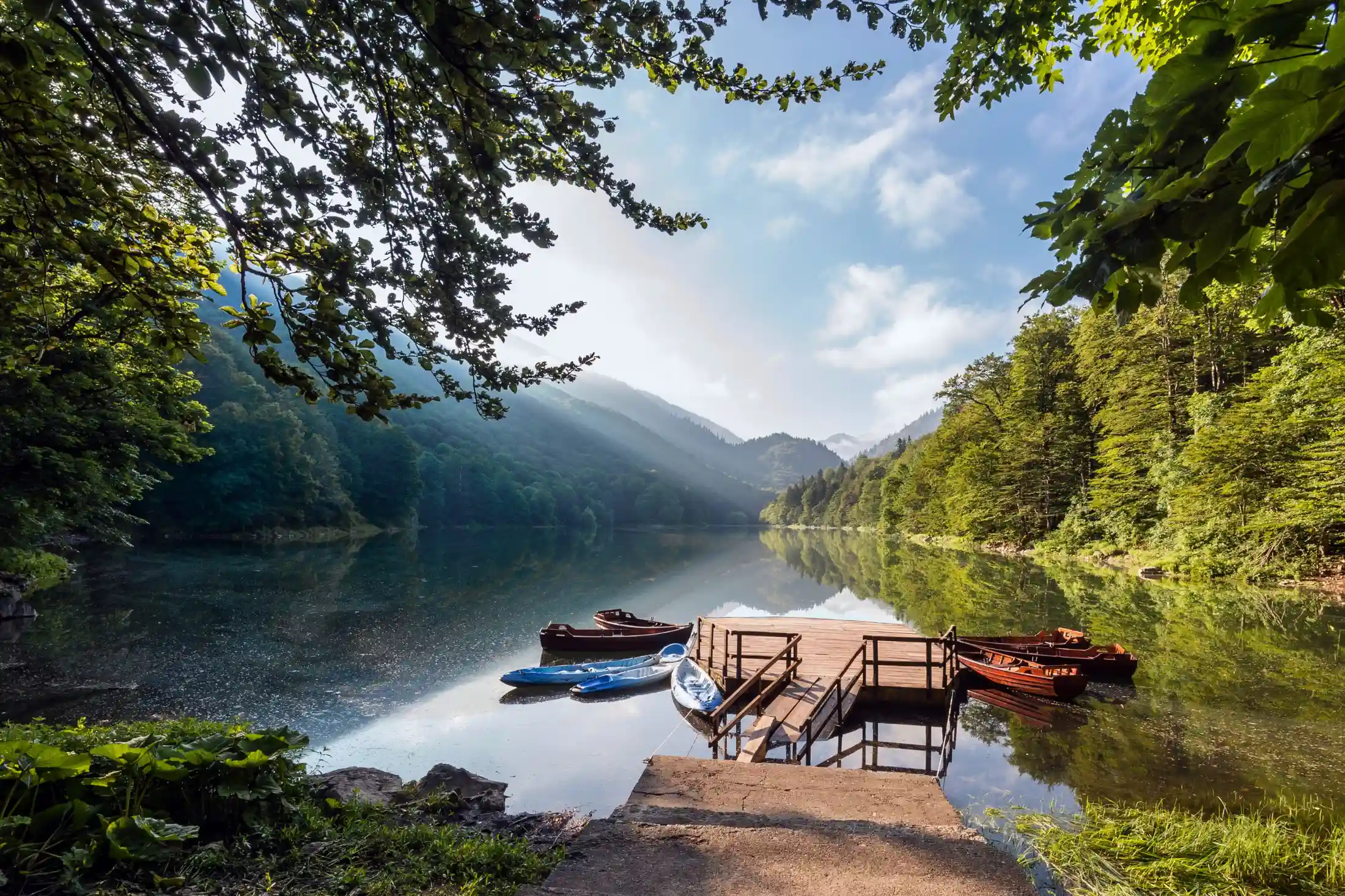
A Journey Through Ancient Woodlands
Biogradska Gora’s most striking feature is its virgin forest. The park is home to trees that are over 500 years old, creating a canopy that teems with life and history. As you walk through these ancient woodlands, you’re treading a path that has remained untouched for centuries. The forest is a haven for botanists, with over 2000 plant species, some of which are endemic to the region.
The park is not only a paradise for plant lovers but also a sanctuary for wildlife. It houses a variety of fauna, including the rare European brown bear, wolves, and over 150 bird species. The diversity of the ecosystem here is astounding – from the lush forest floors to the clear, serene lakes that dot the landscape.
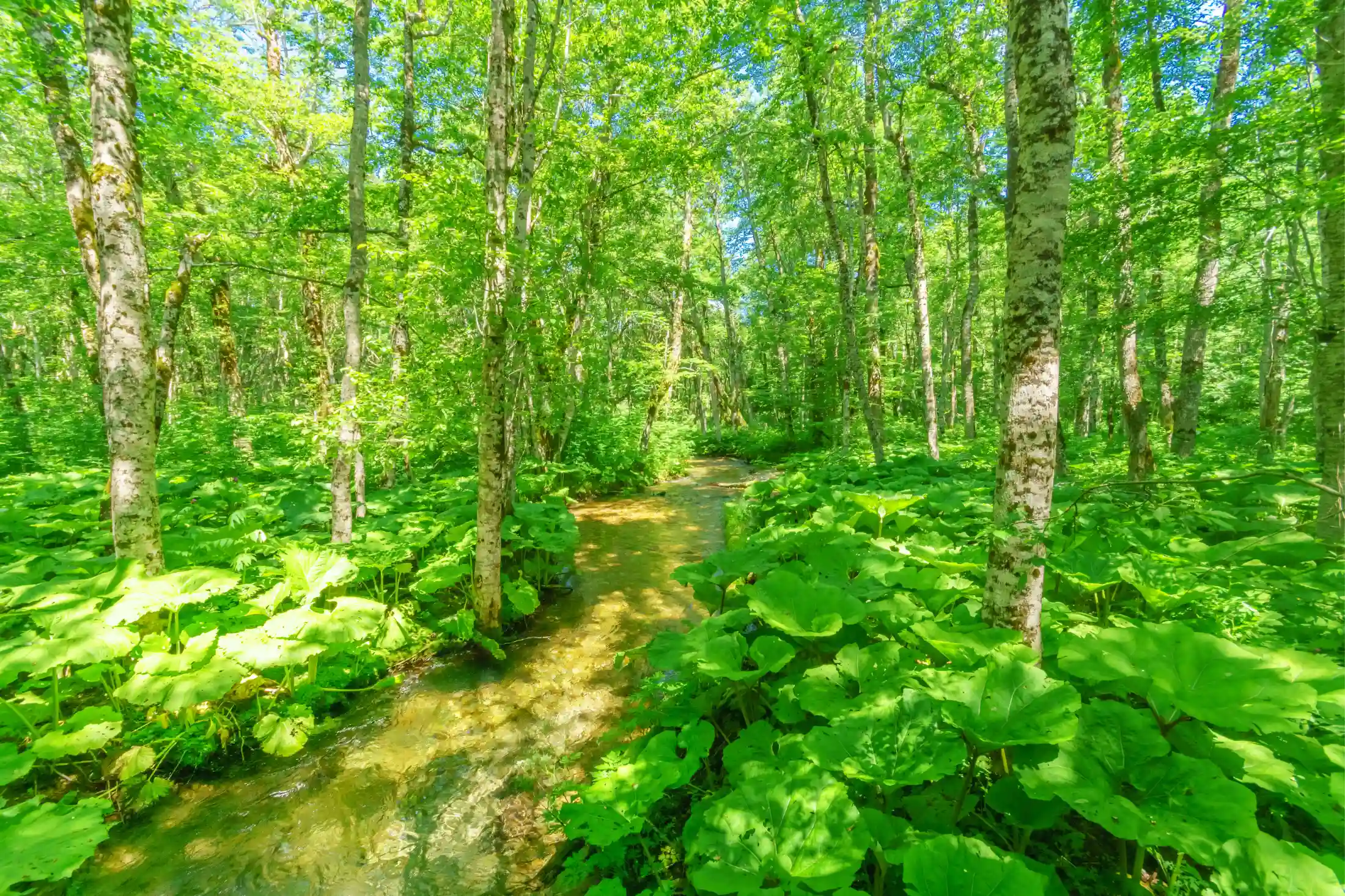
The Heart of the Park: Biogradsko Lake
At the centre of the park lies the stunning Biogradsko Lake. Encircled by forest and meadow, it’s a perfect spot for picnics, photography, or simply basking in the tranquillity of nature. The lake’s crystal-clear waters reflect the surrounding mountains and sky, creating a scene straight out of a fairytale.
Hiking and Adventure Awaits
For the adventurous at heart, Biogradska Gora offers numerous hiking trails. These range from easy walks around Biogradsko Lake to more challenging treks up the surrounding peaks. Each trail offers a unique perspective of the park’s landscape and wildlife. For those seeking a more thrilling experience, mountain biking and camping are also popular activities.
Cultural Heritage
The park is not just about natural beauty. It’s also steeped in cultural history. Visitors can explore traditional wooden huts, known as ‘katuns’, which are still used by local shepherds. These huts provide insight into the lifestyle and traditions of Montenegro’s highlanders.
Sustainable Tourism
Biogradska Gora is a model for sustainable tourism. The park management works tirelessly to preserve this natural wonder while making it accessible to visitors. By visiting, you’re not only enjoying its beauty but also contributing to its conservation.
Whether you’re a nature enthusiast, a culture buff, or an adventure seeker, Biogradska Gora National Park in Montenegro offers something for everyone. To make the most of your visit, plan ahead for accommodations and park activities. Remember to respect the natural environment and leave no trace of your visit behind.
Annual ticket for all five National Parks in Montenegro is 13.50 euros and you can buy it here.
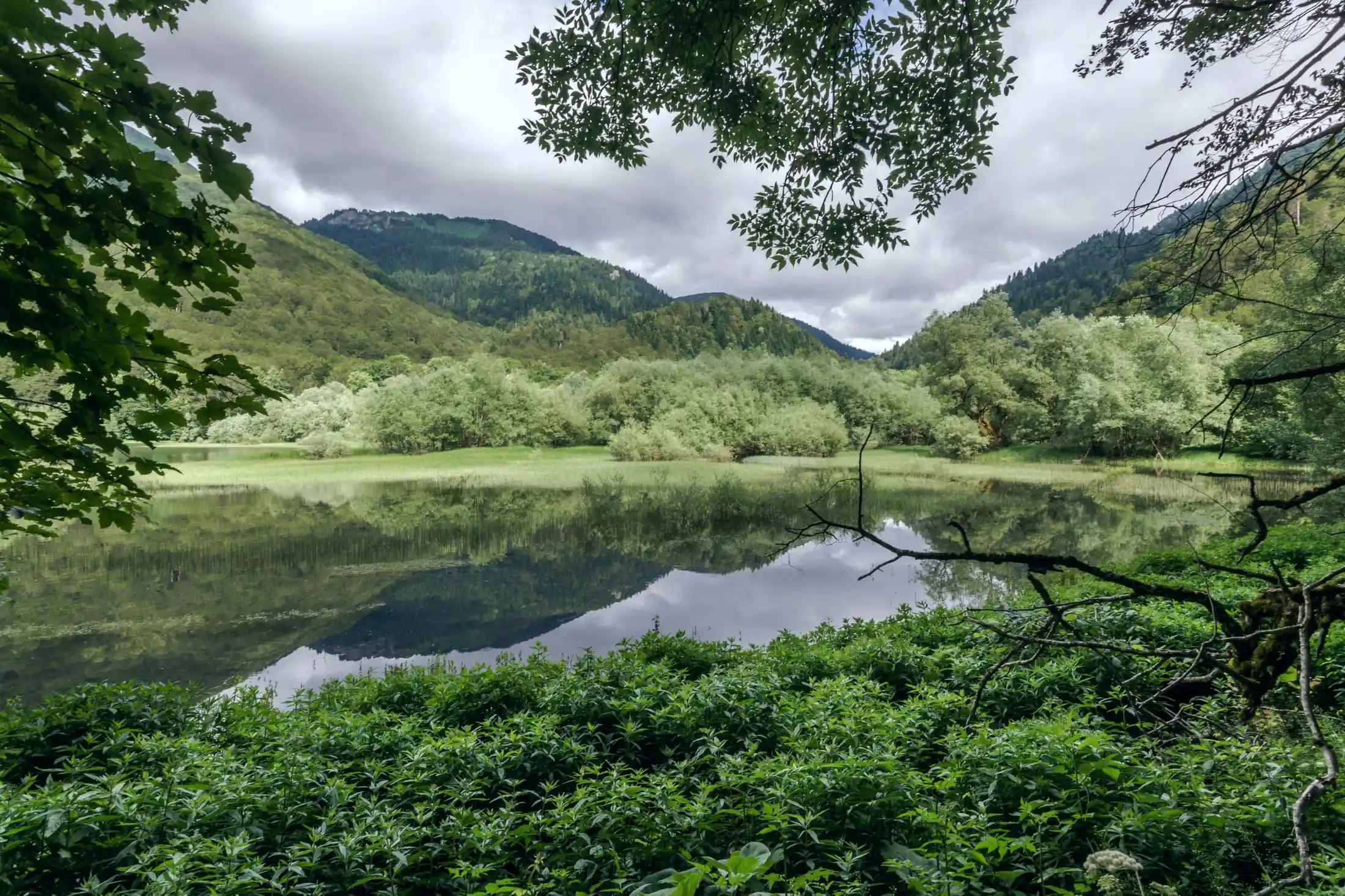
Cetinje: Old Royal Capital of Montenegro
Cetinje, the Old Royal Capital of Montenegro, is a city where the echoes of the past meet the vibrancy of the present. Located in a picturesque valley beneath Mount Lovćen, Cetinje is not just a historical city but a living museum, showcasing Montenegro’s rich cultural and historical heritage. All that just 30 minutes driving from CUE Podgorica.
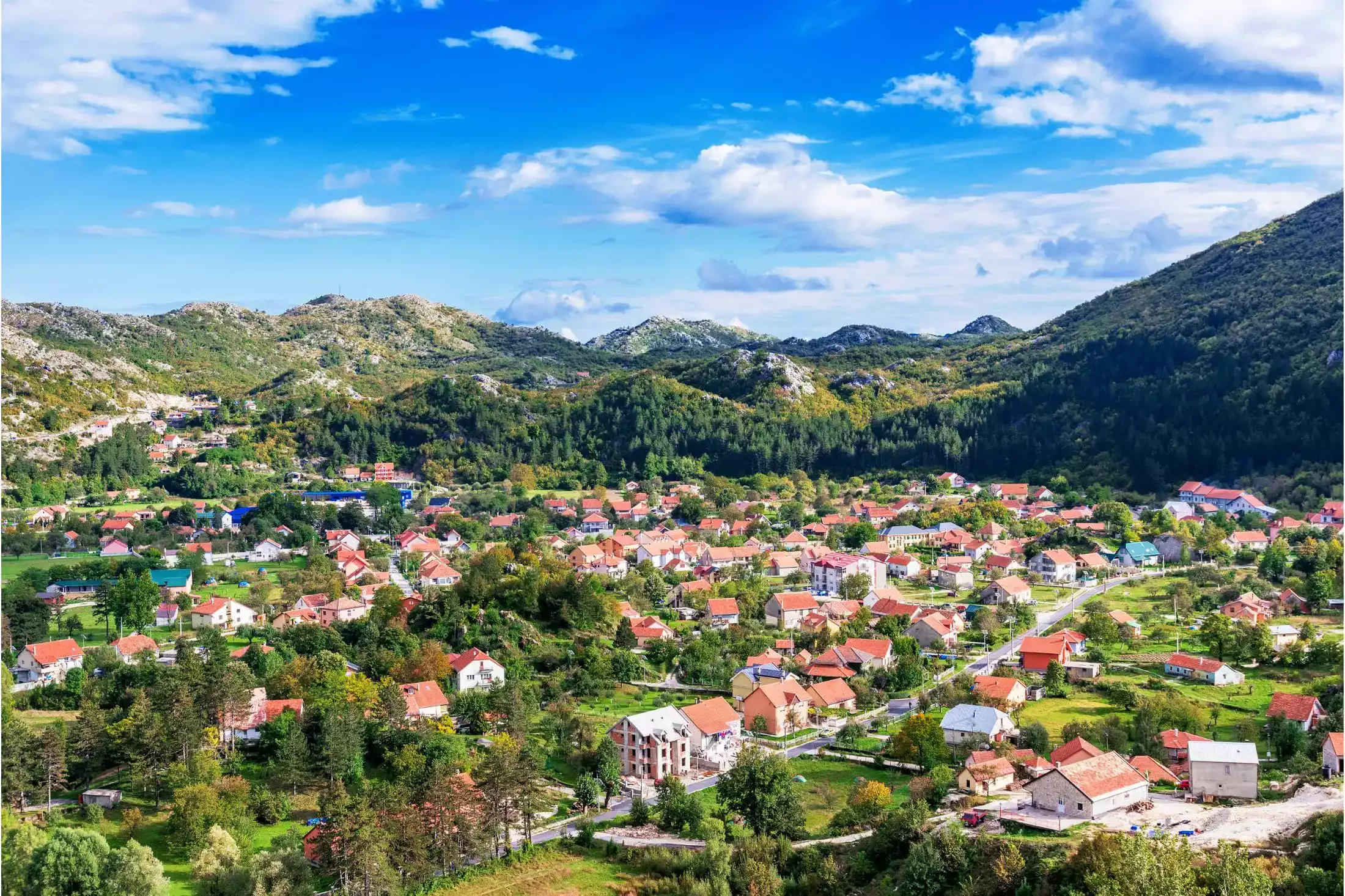
Historical Significance Cetinje’s foundation in the 15th century marked the beginning of its journey as the heart of Montenegrin culture and orthodoxy. It has been the seat of Montenegrin rulers, a witness to political upheavals, and a bastion of national identity. Its streets and buildings are a chronicle of Montenegro’s tumultuous yet proud history.
Architectural Marvels The Cetinje Monastery, dating back to the 15th century, stands as a testament to Montenegrin resilience and faith. The Blue Palace, once the royal residence, now serves as the President’s House, showcasing elegant 19th-century design. Biljarda, named after the billiard table of King Nikola, is another historical edifice, now housing part of the National Museum.
Museums and Art Galleries The National Museum of Montenegro is a conglomerate of museums, including the Historical Museum, Art Museum, and Ethnographic Museum, each offering a unique perspective on Montenegro’s rich artistic and historical tapestry. These institutions house invaluable collections, from medieval artifacts to modern art, telling the story of Montenegro’s cultural evolution.
The Cetinje Monastery The Monastery is not only a religious site but also a symbol of national pride. It holds relics of great significance, such as the hand of John the Baptist and a piece of the True Cross, making it a pilgrimage site for the Orthodox Christian community and a point of interest for history enthusiasts.
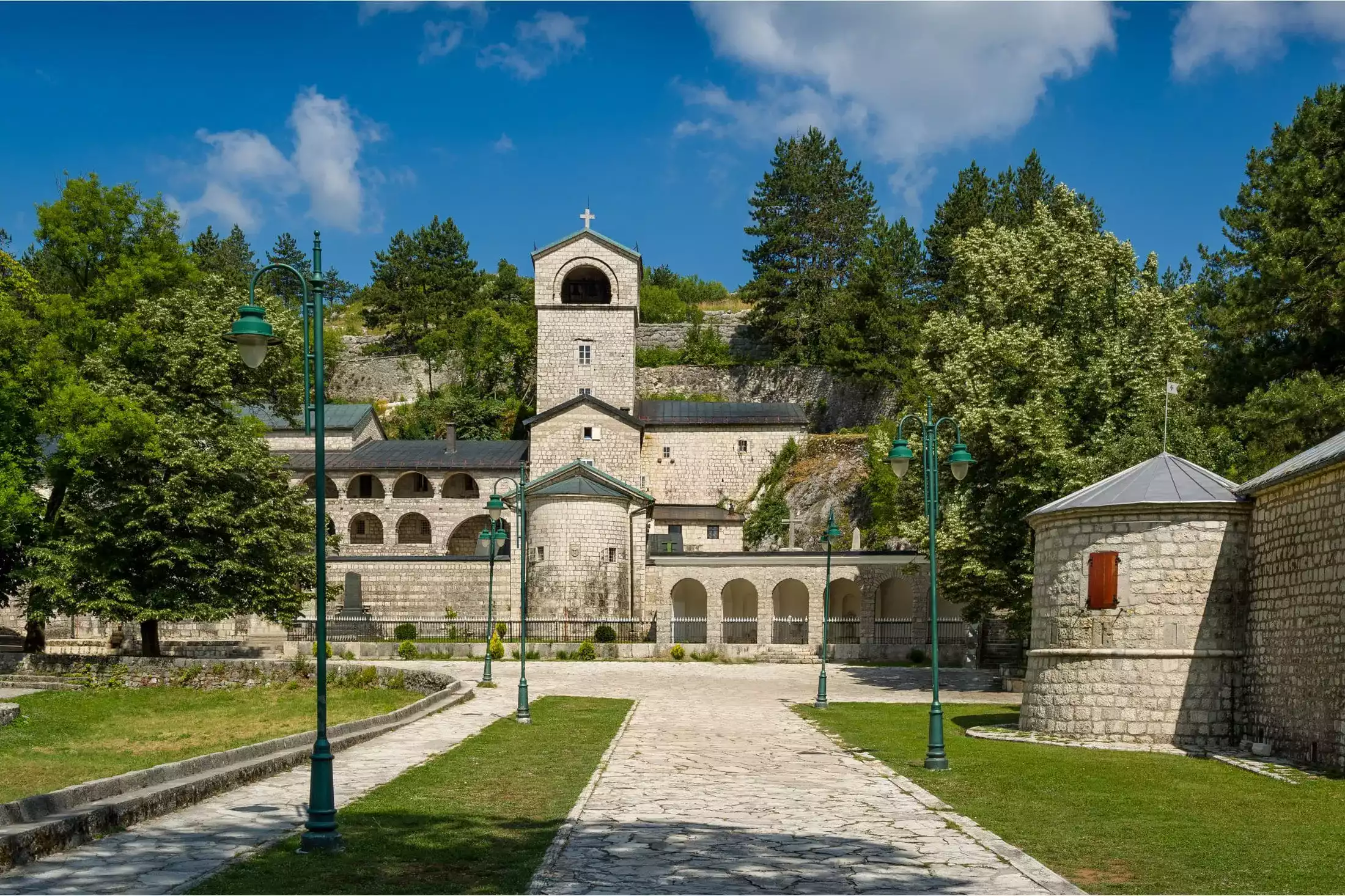
Cultural Festivals and Events Cetinje comes alive with its cultural festivals and events, celebrating Montenegrin folk traditions, music, and dance. These events are a vibrant showcase of the country’s heritage, attracting both locals and tourists alike, and offering a glimpse into the soul of Montenegrin culture. A few days ago, the “New Year’s Story in Prijestonica” bazaar was officially opened till January 8, 2024. Organizers announced a lot of concerts with domestic and regional musical stars.
Nature and Surroundings Lovćen National Park, with its majestic mountain peaks and lush forests, offers a serene escape from the city. The park is not only a natural wonder but also holds cultural significance, housing the Njegoš Mausoleum, a monument to one of Montenegro’s most revered figures, Petar II Petrović-Njegoš.
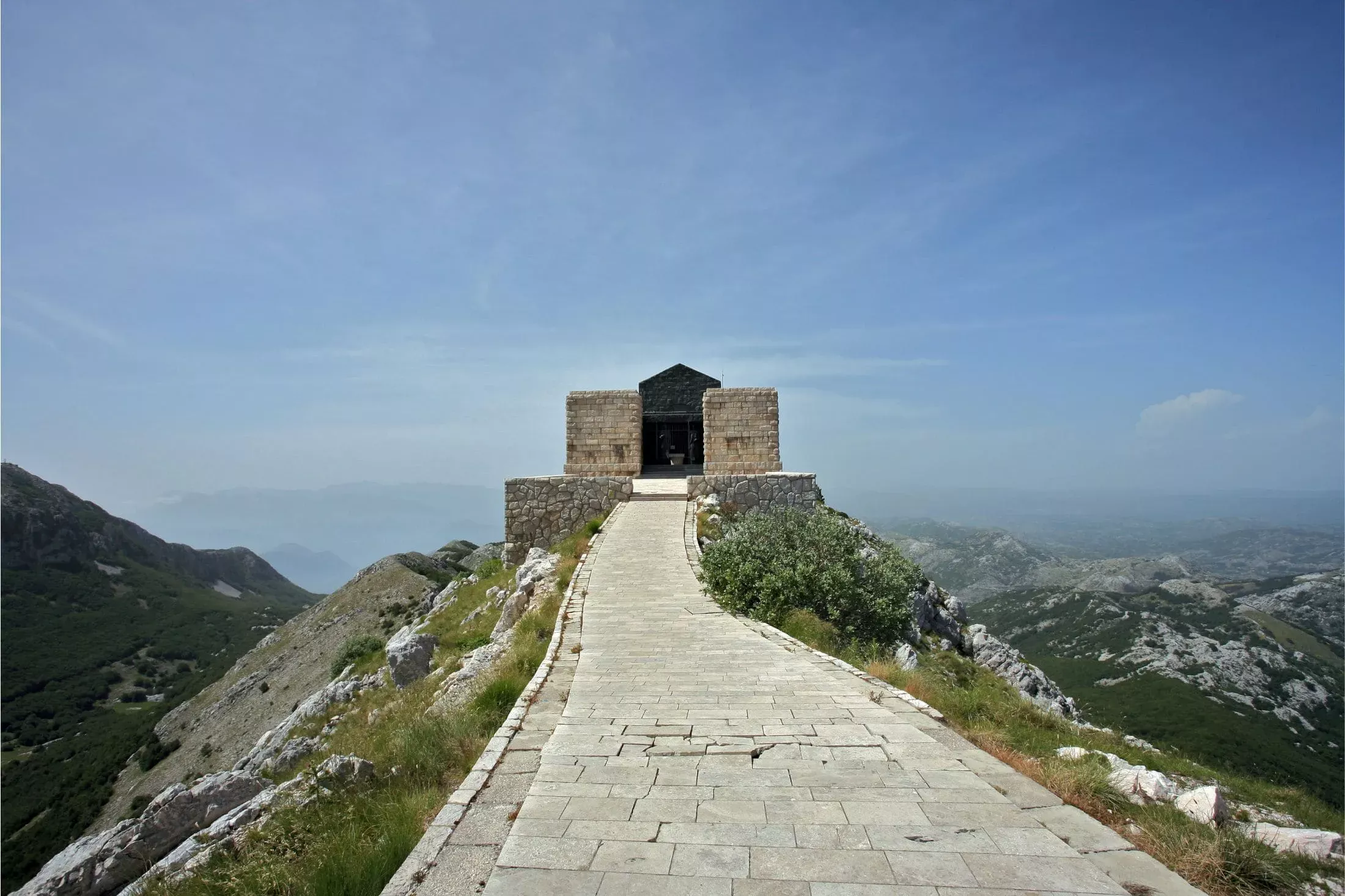
Culinary Delights Cetinje’s culinary scene is a delightful journey through Montenegro’s gastronomic heritage. The region is famous for its Njeguši cheese and prosciutto, one of the most popular local Montenegrin Produce, a must-try for food lovers. These delicacies, with their unique flavors, embody the fusion of the region’s natural bounty and traditional culinary practices.
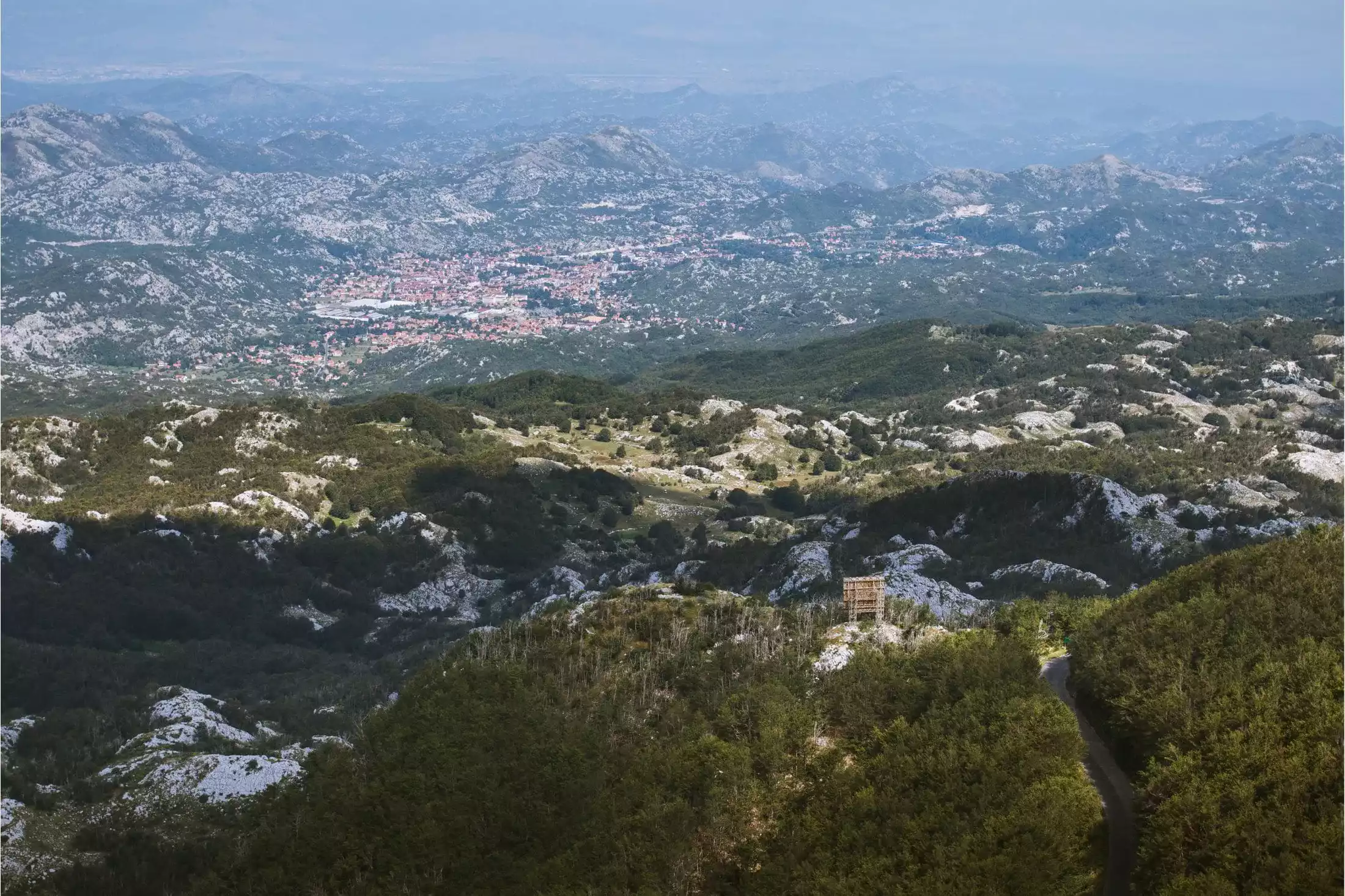
A journey to Cetinje is more than just a visit to another city; it’s an immersive dive into the very heart of Montenegro. As you wander its streets, you’ll be enveloped in tales of the nation’s rich history and vibrant present. Each building, every landscape speaks volumes of the country’s journey. While exploring this captivating city, consider enhancing your experience by staying at the CUE Podgorica Hotel, a remarkable accommodation choice that complements the essence of the region. Cetinje’s blend of historical significance and natural splendor makes it an unmissable destination in Montenegro, and the CUE Podgorica Hotel offers the perfect base to discover it all.
The Ancient City of Duklja: A Portal to Montenegro's Rich History
Welcome to a journey into the heart of Montenegro’s past. For travelers staying at the CUE Podgorica, a visit to the nearby ancient city of Duklja offers a unique opportunity to explore a significant part of the region’s rich historical tapestry.

The Ancient Origins of Duklja
Duklja, originally known as Doclea in Roman times, is a site steeped in history, dating back to the 1st century AD. This city, once a bustling center during the Roman Empire and the early Byzantine period, stood at the confluence of important trade routes, contributing to its prosperity and cultural importance.
The ruins of Duklja tell a story of a city that has seen the rise and fall of empires. Visitors can explore the remnants of Roman streets, public baths, temples, and necropolises, offering a glimpse into the lives of its ancient inhabitants.
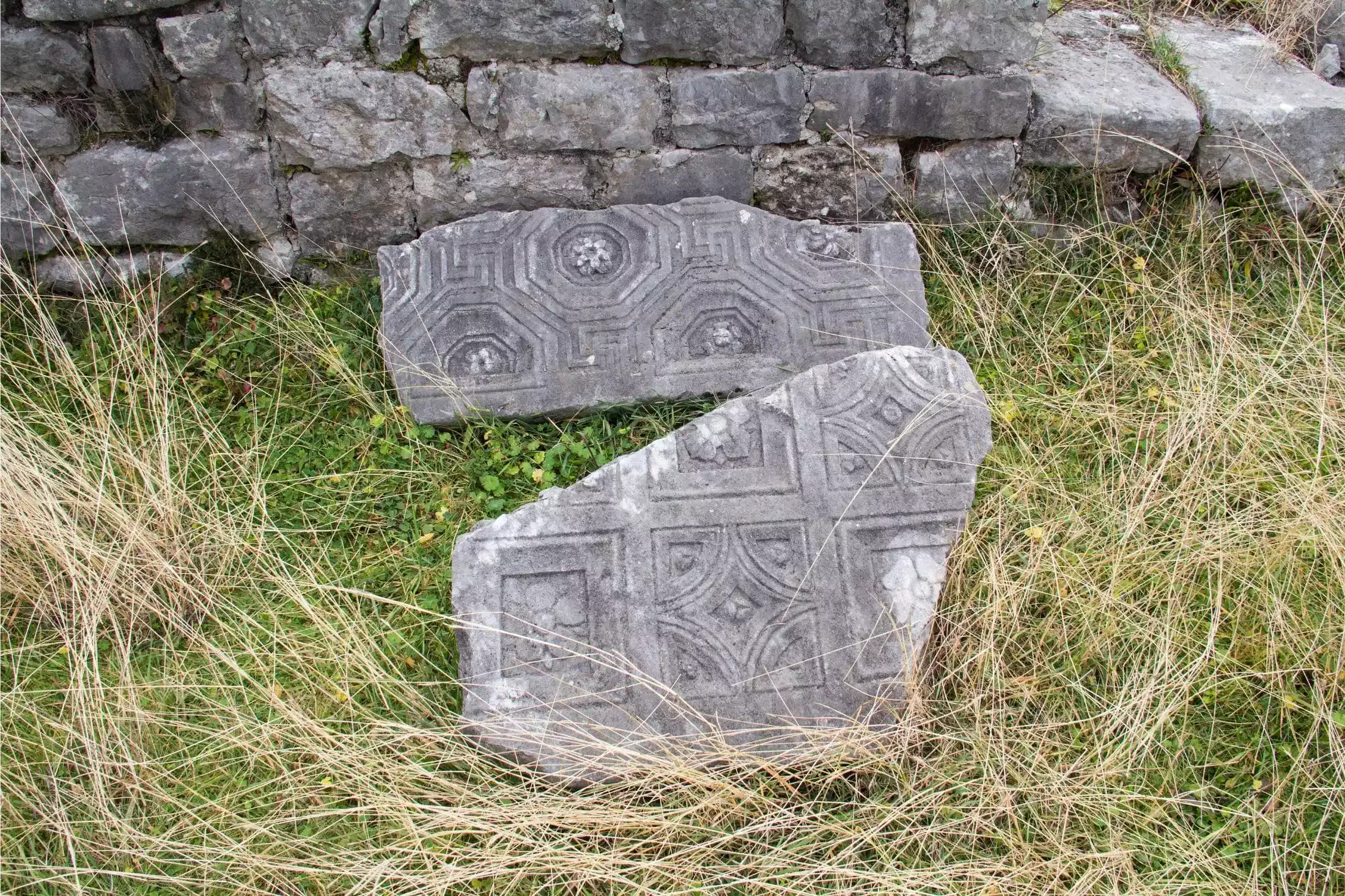
Roman Influence and Architectural Marvels
The Roman influence on Duklja is evident in its architecture and urban planning. The city’s layout, with its streets, public buildings, and homes, reflects the sophisticated Roman approach to city development. Among the most notable architectural remnants are the complex of public baths, showcasing advanced engineering skills in aqueducts and heating systems.
The ruins also reveal a blend of pagan and early Christian influences, with temples dedicated to Roman gods existing alongside early Christian symbols and structures.
Archaeological Discoveries and Cultural Insights
Archaeological excavations in Duklja have brought to light numerous artifacts that offer insights into the daily life, religion, and art of the period. These discoveries include beautifully crafted Roman sculptures, detailed mosaics, and early Christian relics, each telling a story of the cultural and religious diversity of the region.
One of the key attractions for visitors is the necropolis, a testament to the complex funerary practices and beliefs of the ancient inhabitants. The tombs, with their intricate carvings and inscriptions, provide invaluable information about the social structures and personal lives of those who lived in Duklja.
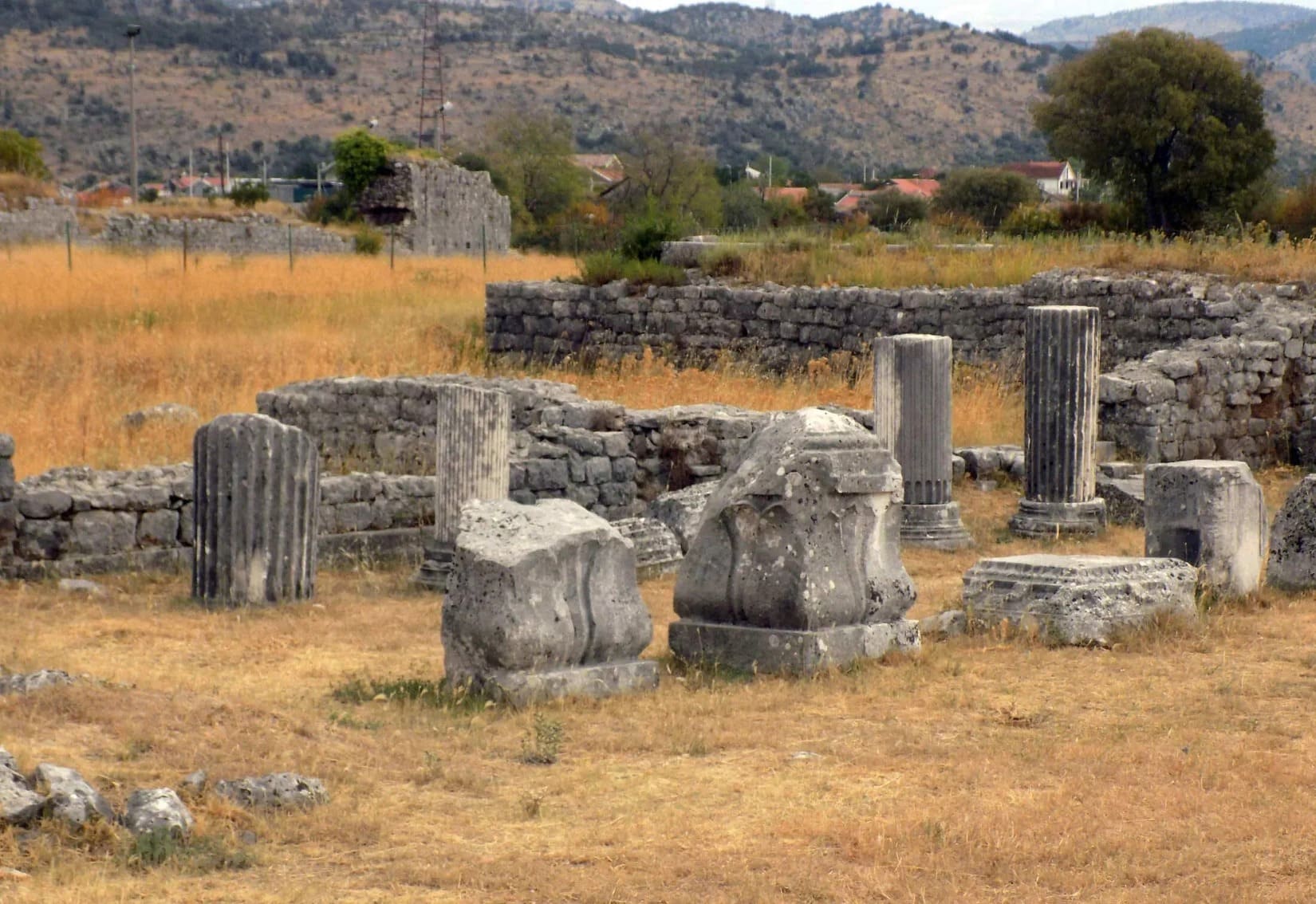
Duklja Through the Ages: From Roman Town to Medieval Fortress
The evolution of Duklja from a Roman town to a fortified medieval city highlights the turbulent history of Montenegro. After the fall of the Roman Empire, Duklja experienced periods of Byzantine, Slavic, and eventually, Ottoman influences. Each era left its mark on the city, contributing to its rich historical mosaic.
Visiting Duklja: A Must-Do for Guests at CUE Hotel
For guests at the CUE Podgorica, a visit to Duklja is both convenient and highly recommended. Just a short drive from the hotel, this historical site is an ideal destination for a day trip. Explore the ancient ruins, immerse yourself in the history of Montenegro, and capture the essence of a bygone era.
After a day of historical exploration, return to the comfort and modern amenities of the CUE Podgorica. The hotel’s prime location, combined with its luxurious offerings, makes it the perfect base for those looking to delve into Montenegro’s rich past and vibrant present.
The ancient city of Duklja is a journey through time, offering a glimpse into the layers of history that have shaped Montenegro. For travelers staying at the CUE Podgorica, this historical gem is a must-visit, seamlessly blending the exploration of ancient wonders with contemporary comfort and luxury. Check out the CUE Podgorica offers and book an unforgettable stay today!
Savoring Tradition: Announcement of the Third RAKIJA Fest at Hotel CUE Podgorica!
An exciting December for all rakija enthusiasts is coming with the third Rakija Fest, set to take place on Saturday, December 9, 2023, in the Grand Room of Hotel CUE Podgorica.
The unique event organized by Hotel CUE Podgorica promises to captivate visitors from 12 PM to 8 PM. Exhibitors from Montenegro and the region will showcase an impressive array of 120 rakija varieties, some with decades-long traditions.
This is your opportunity to save the date and join us as we collectively relish products worthy of national acclaim. Tickets for this unforgettable event are available for only 10 euros at The Living Room Lounge & Dining bar.
Join us at Rakija Fest and explore the richness of flavors and heritage that these traditional beverages carry.
Hotel CUE Podgorica organizes Rakija Fest with the support of TO Podgorica, Aqua Bianca company and The Capital Plaza center.
See you in the Grand Room of Hotel CUE Podgorica!
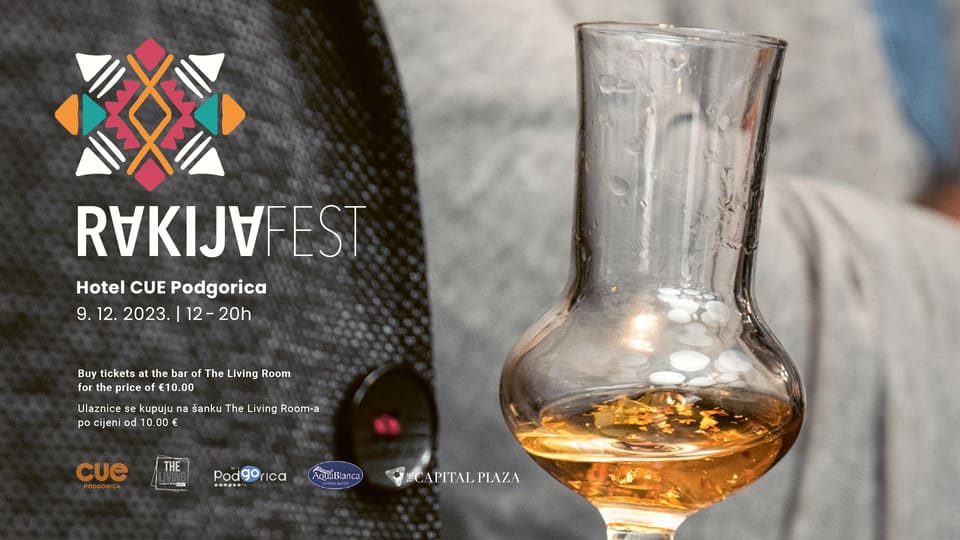
Portraits of renowned artists at CUE Podgorica Hotel
The photo exhibition ‘Behind the Face’ by the acclaimed artist Nebojša Babić from Serbia was opened last night at the CUE Podgorica Hotel gallery. Babić presents a wide spectrum of personalities, from actors, artists, musicians to athletes and writers, including Anica Dobra, Voja Brajović, Mirjana Karanović, Sonja Savić, Novak Đoković, Josipa Lisac, Jagoš Marković, Zubin Mehta, Aleksandar Kelić, and many others.
The exhibition, consisting of 54 photographs, was opened by Dejan Kalezić, founder of the F64 Gallery, the only photo gallery in Montenegro.
“I wouldn’t speak much about Nebojša’s work because the portraits speak for themselves. What impressed me the most is the individual approach to each portrayed person. Together, we strive to elevate photographic culture to a higher level,” concluded Kalezić.
Babić’s portraits are special because they reveal the characteristics of each person and depict them in a way that unveils their essence, authenticity, and depth. Each portrait is carefully composed, with a keen focus on light and background.
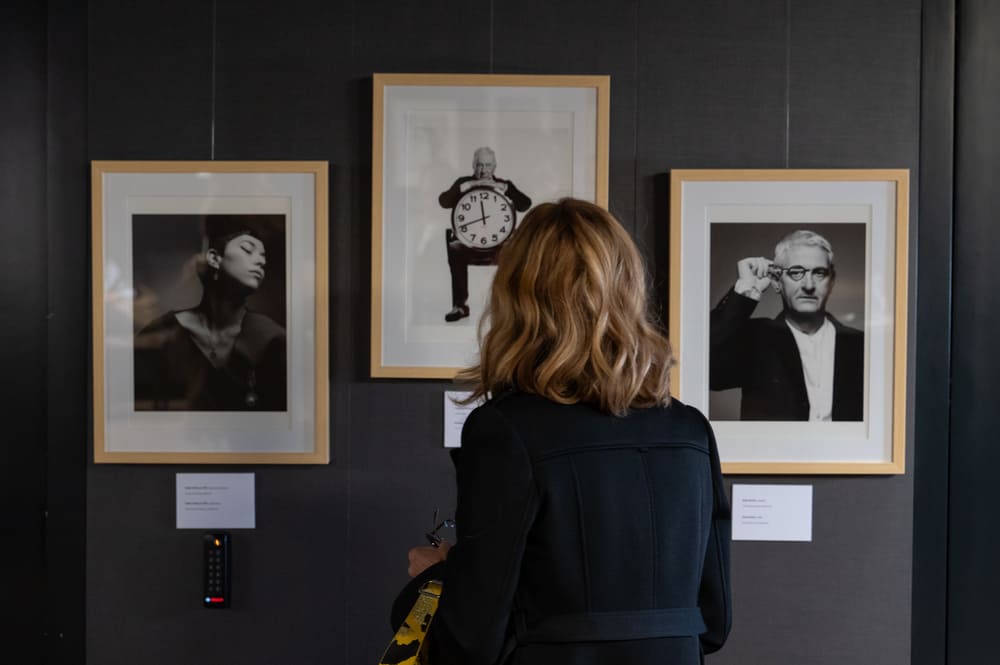
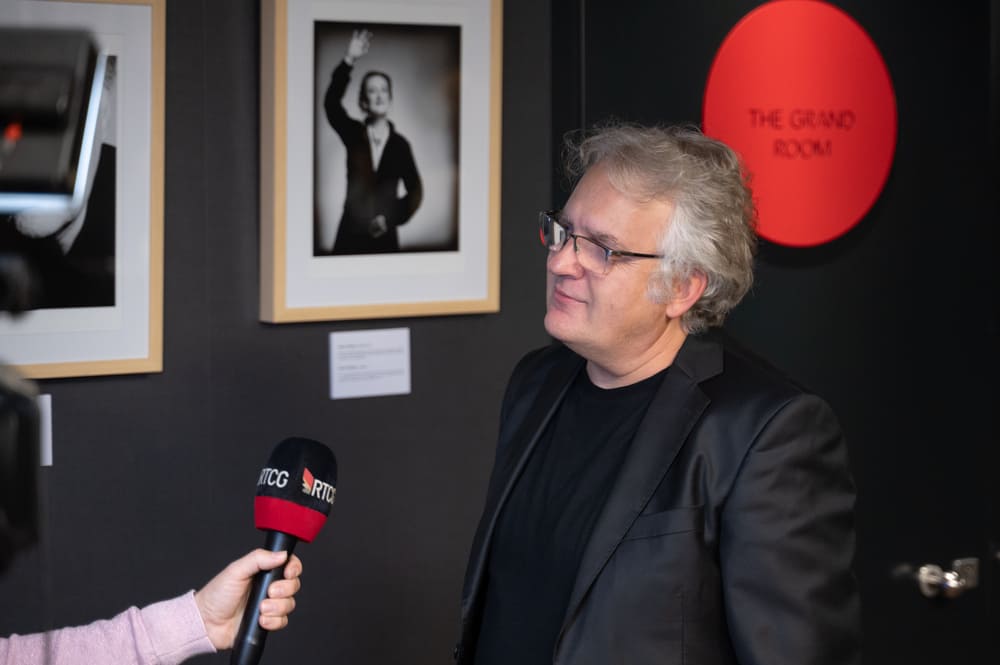
“I am happy to have the opportunity to exhibit my photos in Podgorica. Here, I’ve met many wonderful people and colleagues, experiencing the warmth and hospitality. It’s important that these things happen in Montenegro, throughout the region—for us photographers and the art of photography,” emphasized Babić.
More than half of Babić’s photos that are in CUE Podgorica, this summer were exhibited at the F64 gallery, marking his first solo exhibition in Podgorica.
We invite all interested people to immerse themselves in Nebojša Babić’s world of portrait art until the end of November at CUE Podgorica Hotel and enjoy the fantastic exhibition, which includes motivational messages and statements from the portrayed personalities.
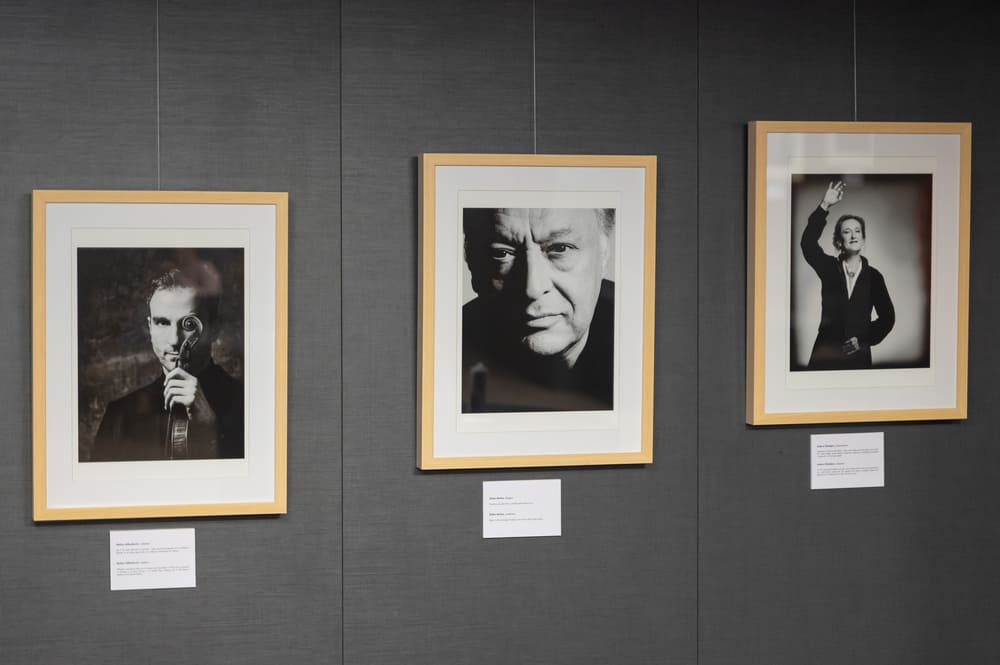


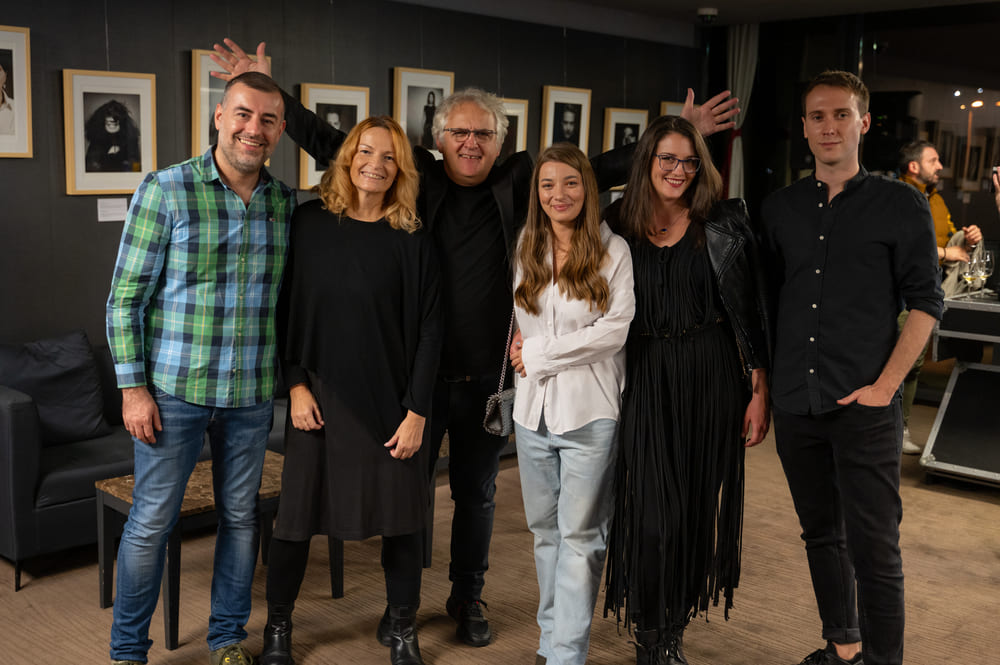

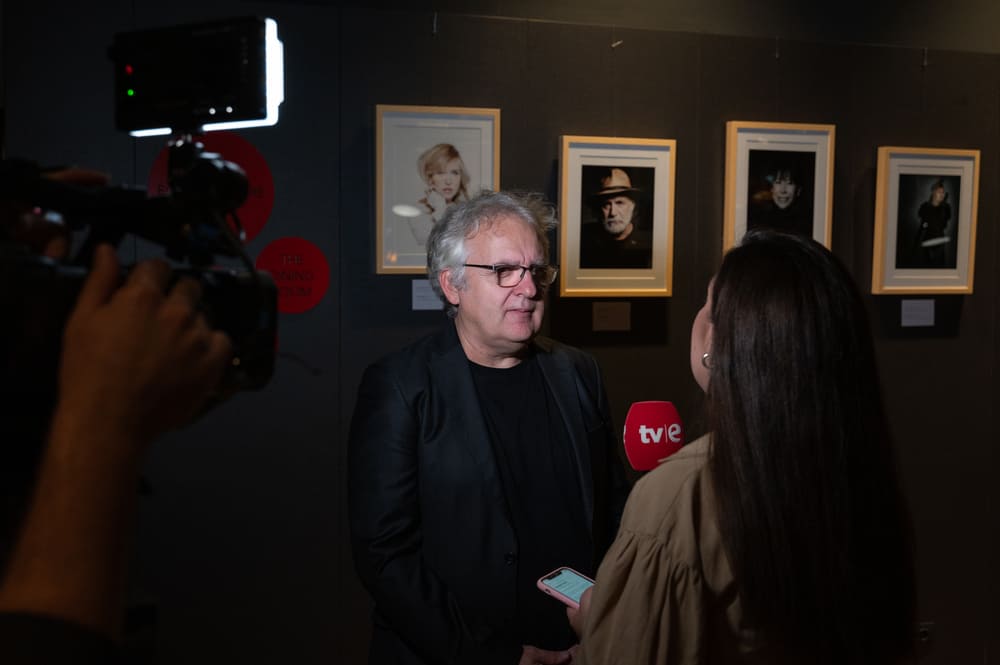
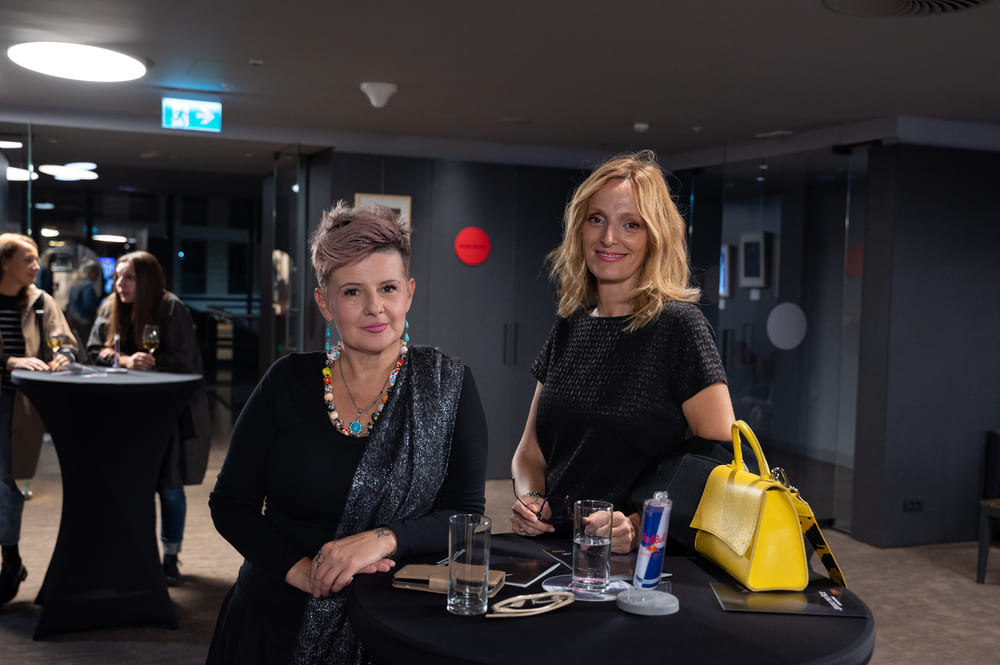
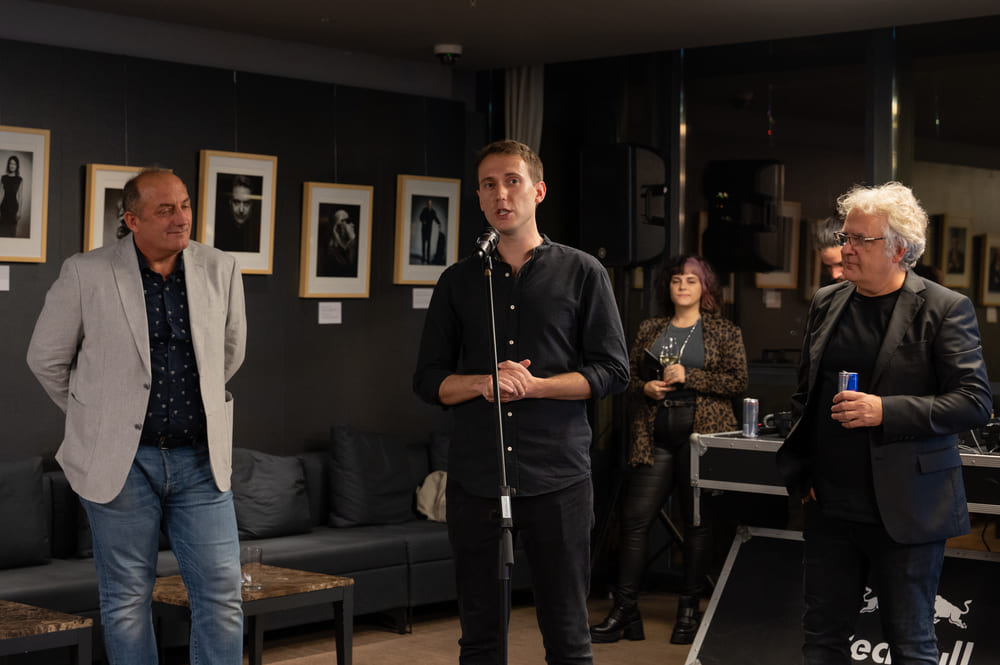
Walking the Winding Streets of Old Town Kotor
The Old Town of Kotor has always been a remarkable destination, with a history stretching back over two millennia, showing a civilization’s march through time. No visit to Montenegro should go without a visit to Kotor. CUE Podgorica remains the best hotel, haven from which to visit this beautiful country.
The Genesis of Kotor
Kotor’s name finds its roots in the ancient Greek word “Dekatera,” hinting at the notion of “hot.” Early mentions highlight an “Upper town” and “Lower town”. The former refers to the ancient part perched atop hill St. Ivan, while the latter embodies what we recognize today as Old Town Kotor.
Dominions and Dynasties: Who Ruled Kotor?
Kotor has borne witness to many hands of power. From the Illyrians, Venetians, Austrians to the French, the influence of these rulers is palpable in its culture and architecture.
The first torchbearers were the Illyrians around the III and II centuries B.C. However, the Romans left a more indelible mark, establishing their dominance from 168 B.C. to 476 A.D, referring to the town as Akruvijum. The Byzantines then took the baton, renaming the city as Dekaderon till 1185.
The medieval era ushered in a prosperous phase under the Nemanjić dynasty, turning Kotor into a bustling seaport and bridging connections with the West.
Kotor, valuing its independence, became a republic from 1391 to 1420. However, fearing Turkish conquest, the Big council of Kotor handed over the reigns to the Venetian Republic. This Venetian era, up until 1797, was tumultuous, marking one of Kotor’s most dramatic chapters.
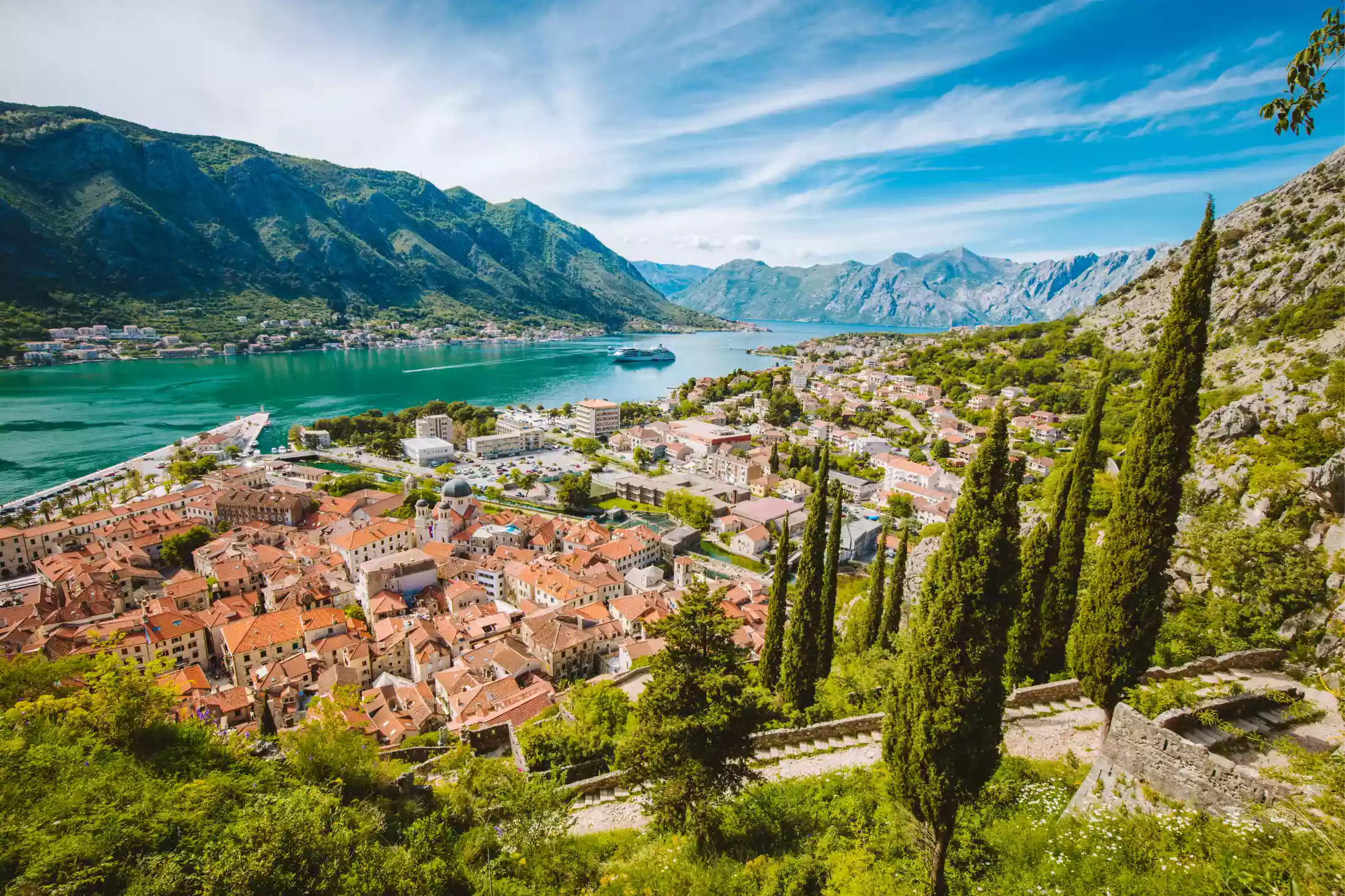
The 19th century was no less eventful. Austrians and French had their moments of ascendancy. It was the Montenegrin ruler, Petar I Petrović, who in collaboration with the locals, rebelled against the French in 1813, briefly uniting Kotor and Montenegro. However, the union was short-lived, and Austria stamped its authority till 1918. Their century-long reign was fraught with uprisings from the locals.
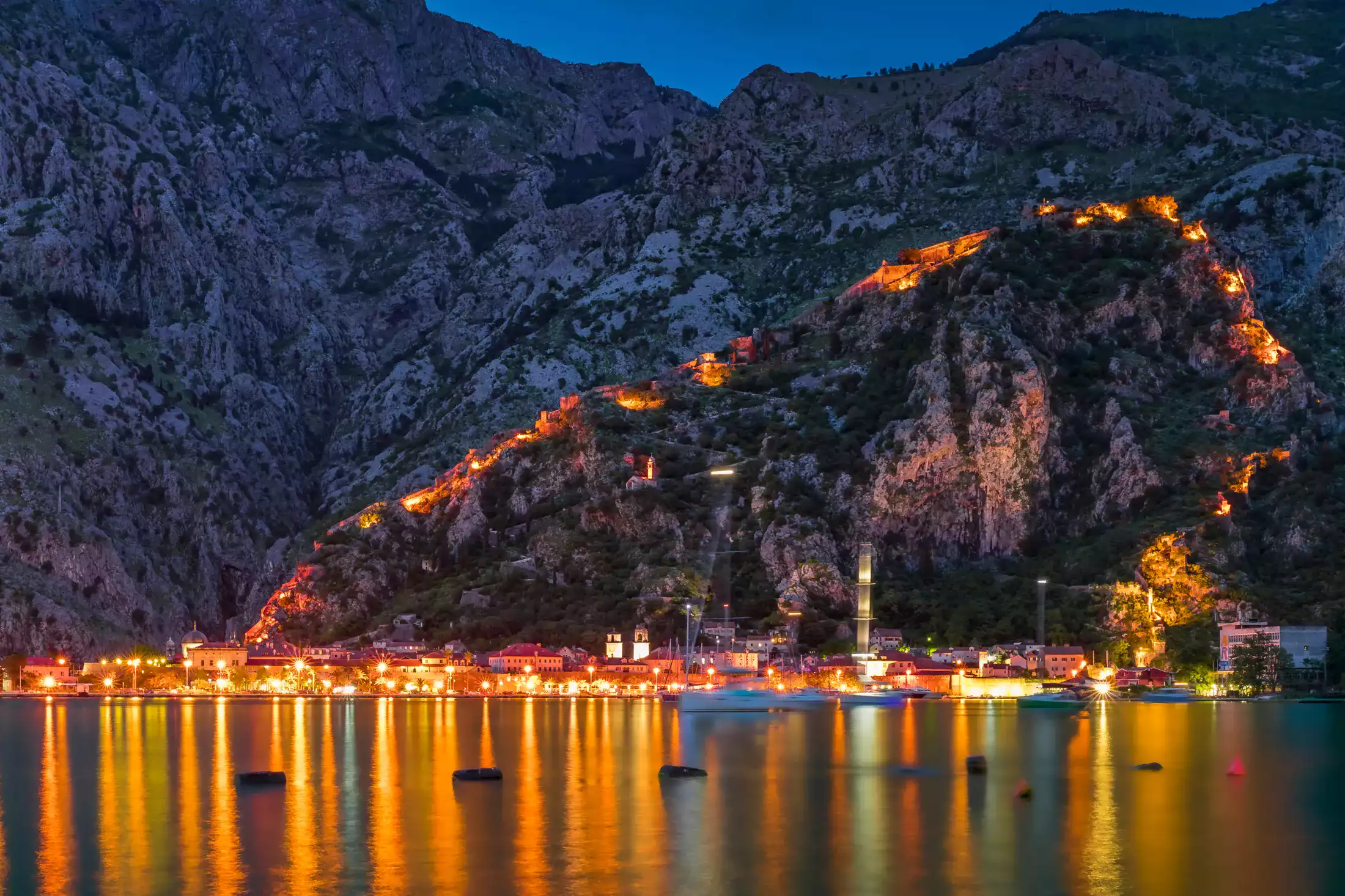
Diverse Historical Attractions of Old town Kotor
Delving into its heart, old town Kotor captivates visitors with its cobblestoned streets. Surrounding the city, ancient walls extend for an impressive 4.5 km, tracing the contours of the town and offering breathtaking panoramic views of the Adriatic below.
1. The Grand Entrances
Old Town Kotor boasts three majestic gates that welcome visitors. The Sea Gate, reflecting Renaissance-Baroque splendor, stands as a testament to the Venetian reign. While the South Gate, or the Gurdic gate, is the oldest, the north gate immortalizes Kotor’s victory over the renowned Turkish admiral, Barbarosa.
2. Exploring The Arms Square
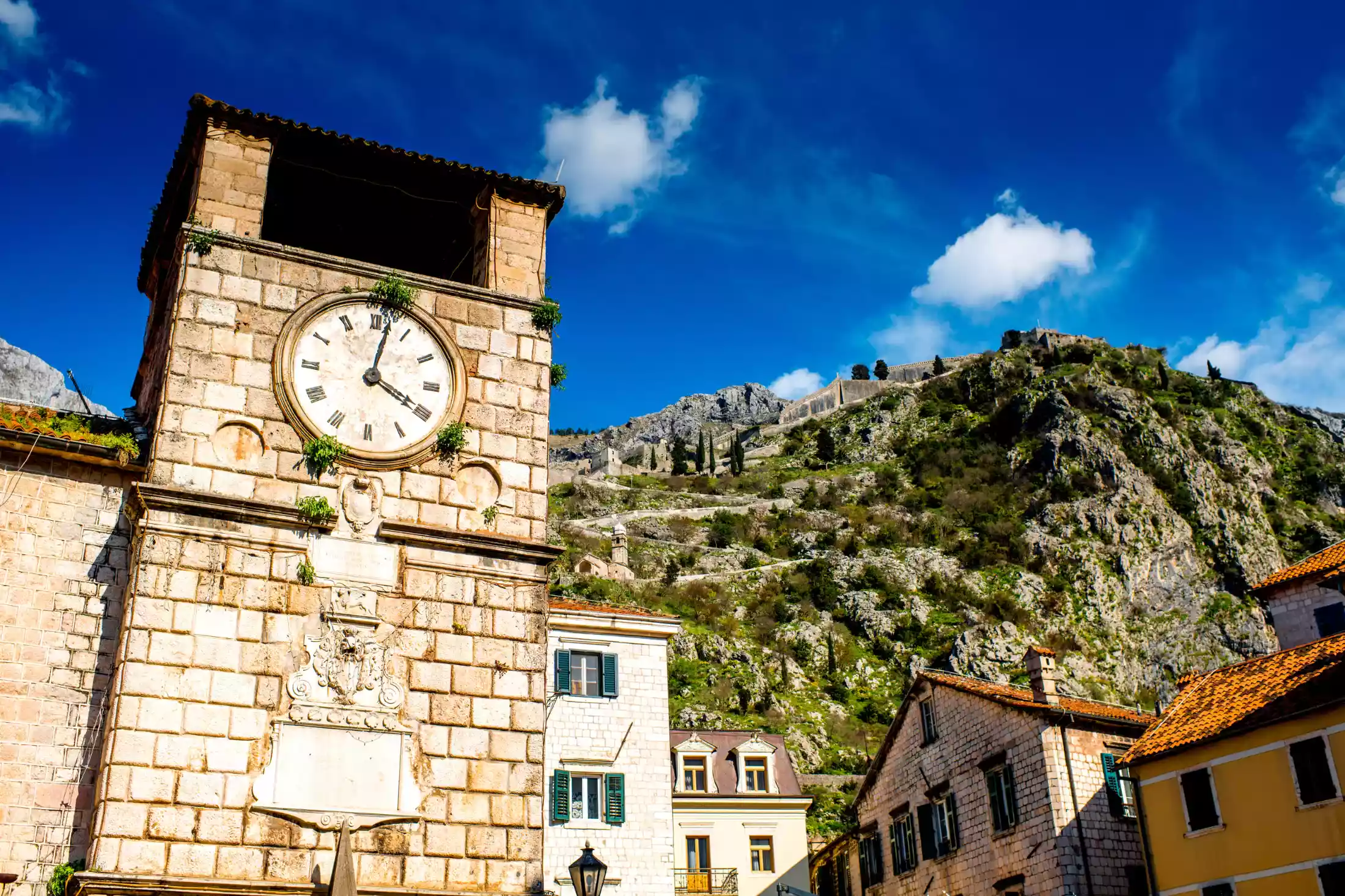
Upon entering through the Sea Gate, visitors are greeted by the expansive Arms Square (Trg od oružja). Once a storehouse for Venetian weaponry, this square now houses prominent structures like the Clock Tower and the Prince’s Palace.
3. Saint Tryphon Cathedral
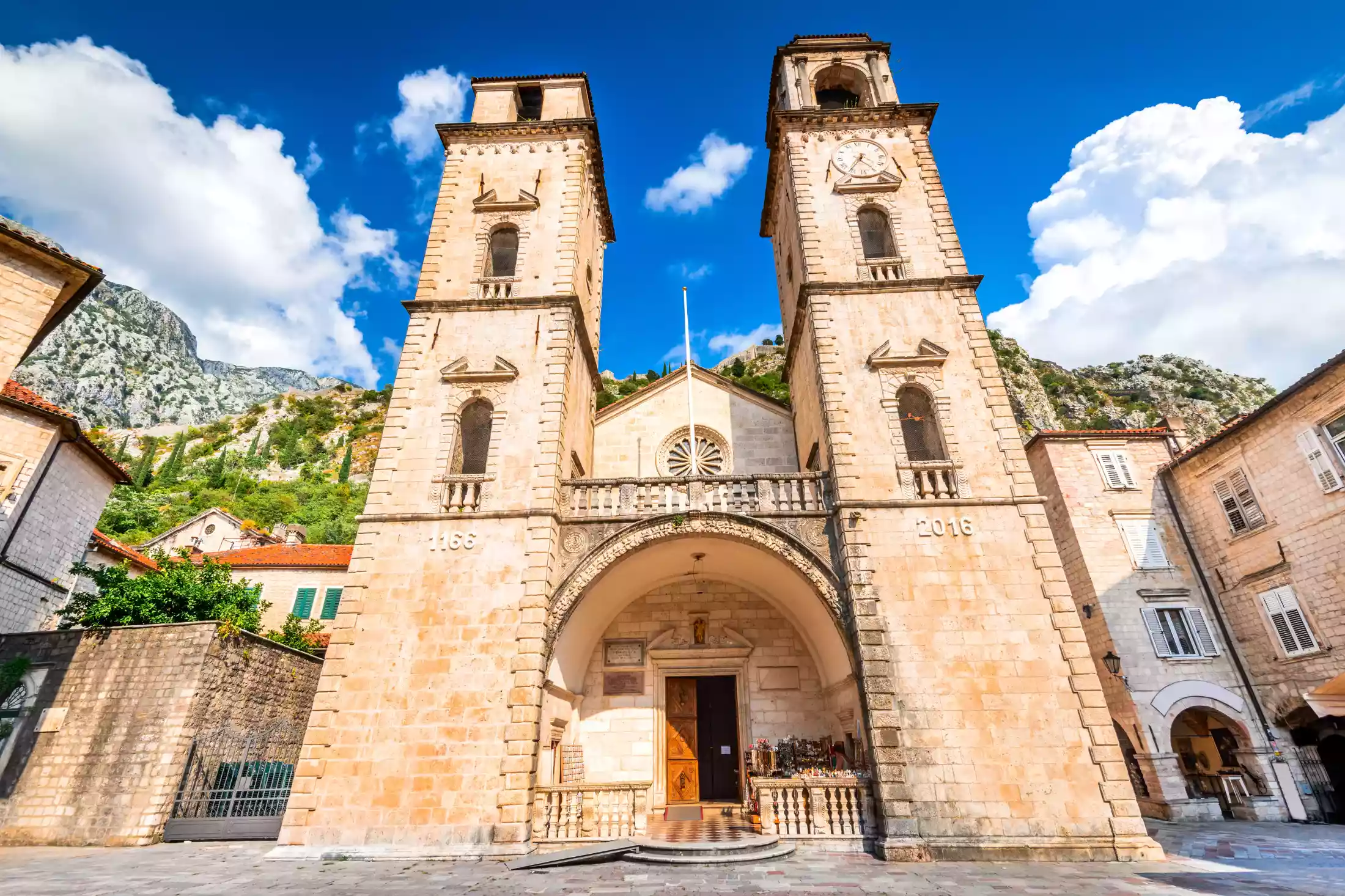
Towering over Saint Tryphon’s Square, this cathedral is a work of art, with frescoes painted by Greek masters. Earthquakes have changed its visage, but it remains a beautiful mix of Romanesque, Gothic, and Baroque elements.
4. Squares That Speak History
From the Square of Salad, echoing with stories of vegetable trade, to the Boka Naval Square, home to the Maritime Museum nestled within the baroque Grgurina Palace, Kotor’s squares are all uniquely interesting. The Milk Square and the Square of Saint Luka, with its charming Church of Saint Luka, offer serene retreats.
5. San Giovanni’s fortress, a Stone Sentinel
Perhaps the most iconic symbol of Kotor, the San Giovanni Fortress offers beautiful views of the Adriatic. Stretching over 4.5 kilometers, this fortress serves as a historic sentinel. Don’t miss the church of Our Lady of Health on your climb to the top.
6. Islets of the Adriatic: Kotor’s Day-Trip Destinations
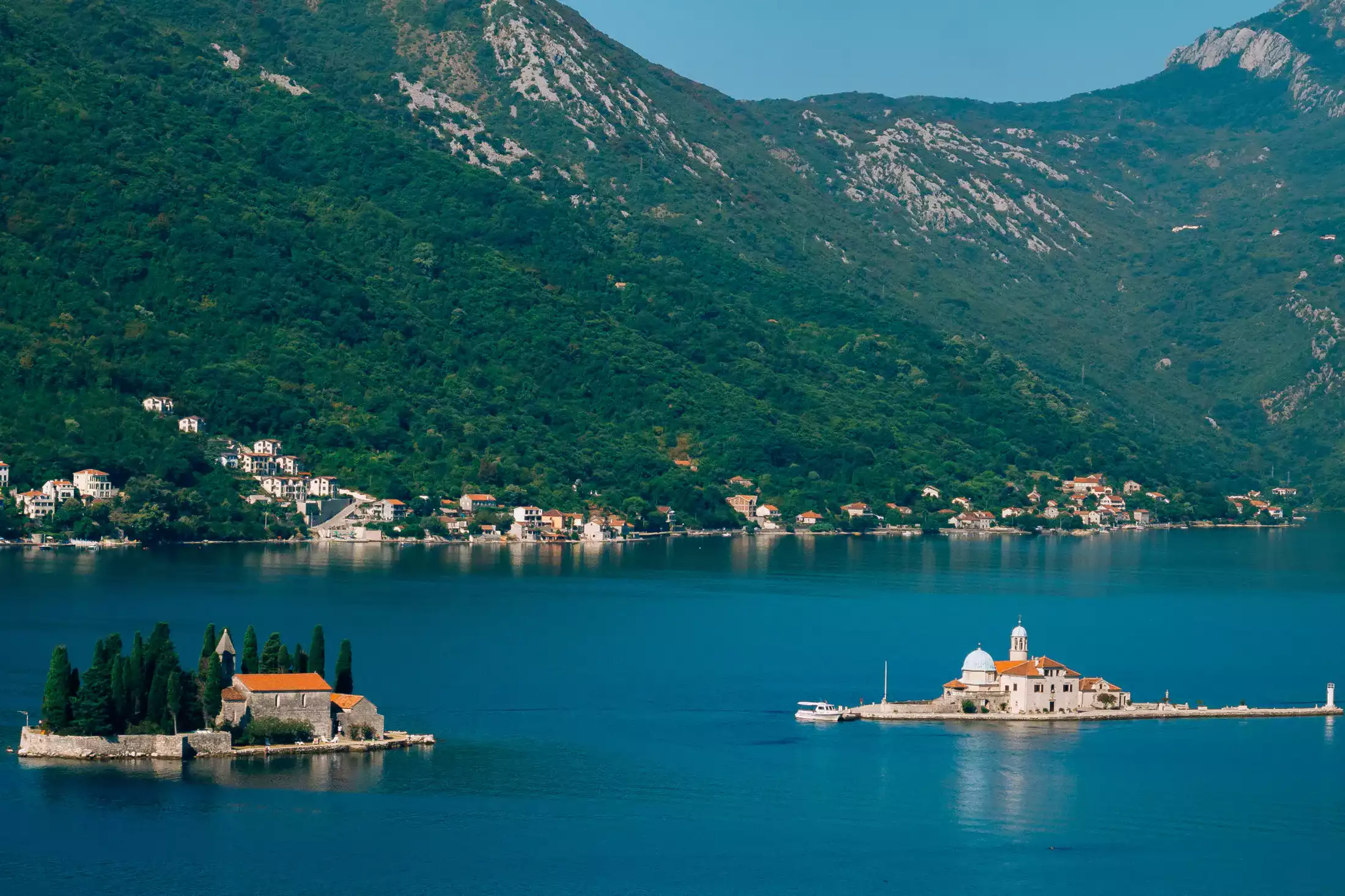
In the serene waters near Kotor, one finds the enchanting islets of Sveti Đorđe and Gospa od Škrpijela off the coast of Perast. Rich in legends, history, and unparalleled scenic beauty, these islets beckon travelers seeking a deeper connection with the region’s maritime legacy.
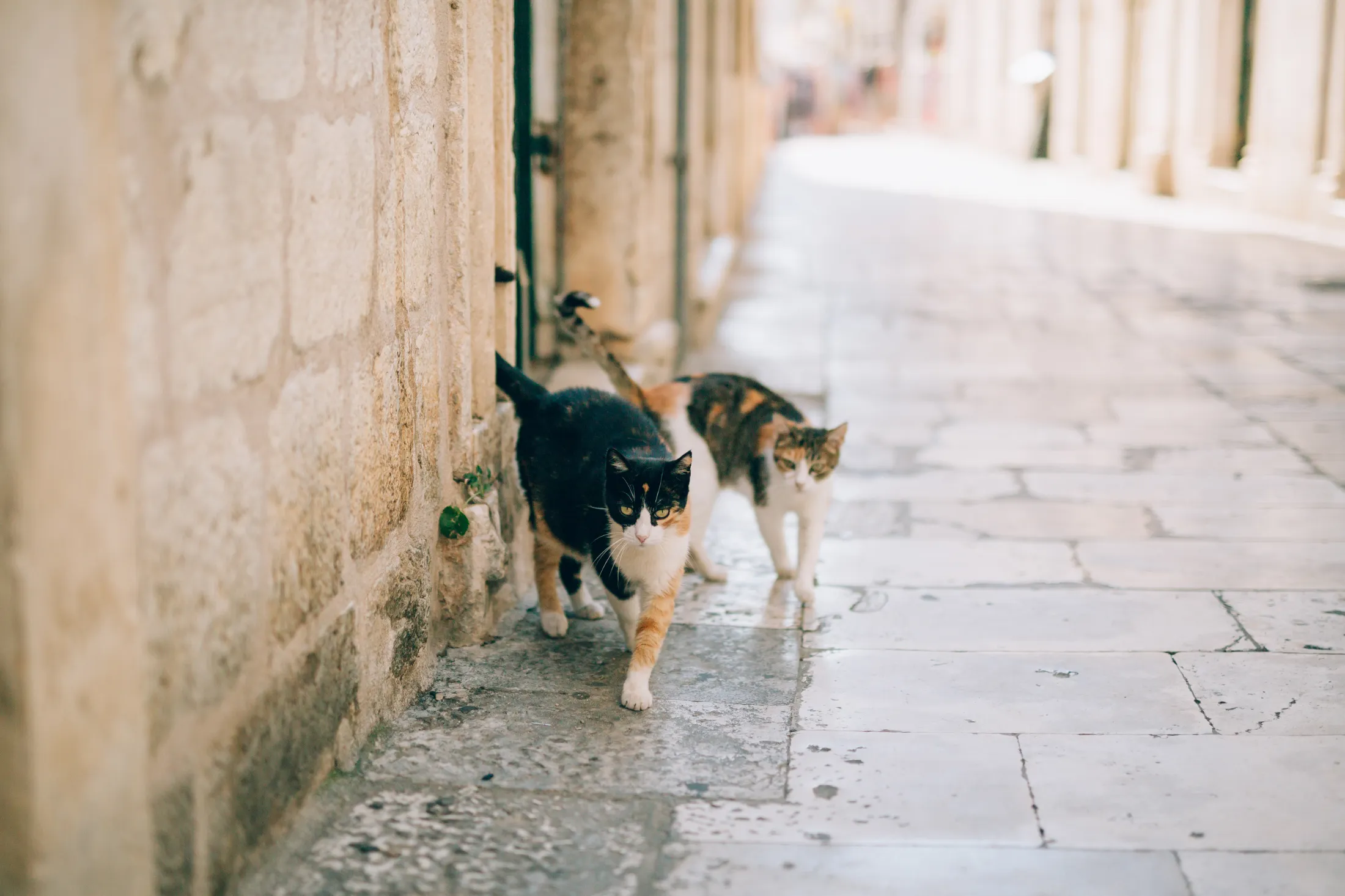
7. Cats: The Whiskered Ambassadors of Kotor
As you meander through these historic sites, don’t be surprised if you’re joined by some adorable local guides. Almost as photogenic as the landmarks themselves, Kotor’s resident cats are an integral part of the town’s charm. Their presence not only adds a touch of whimsy but underscores the town’s unique character, making them just as worthy of your camera’s attention.
Wander through the town’s cobbled alleys and squares, and you’re greeted by “The Cats’ Square” (Trg od mačaka), boutique cat stores, and even a museum dedicated to these whiskered denizens.
The community’s fondness for these cats is palpable. Across the city, one would find food and water laid out for them, and makeshift cardboard abodes ensuring they have a cozy nook to curl up in.
Charities like Kotor Kitties have sprung up, dedicating themselves to alleviating the hardships faced by these cats. Their initiatives, particularly focusing on spaying and neutering, aim to create a more humane environment for the city’s feline ambassadors.
Navigating Your Way to Kotor
Reaching Kotor, the gem of the Adriatic, is a fairly straightforward affair. Situated strategically, the town is linked to the Adriatic Highway, which further connects to both the coastline and the inner territories of Montenegro via the Vrmac Tunnel. If you’re traveling from the inland, you can take a detour from the Adriatic highway at locales like Budva or Sutomore, the latter taking you through the Sozina tunnel. For those keen on scenic routes, there’s an old-world road linking Kotor and Cetinje, offering panoramic views of the Kotor bay.
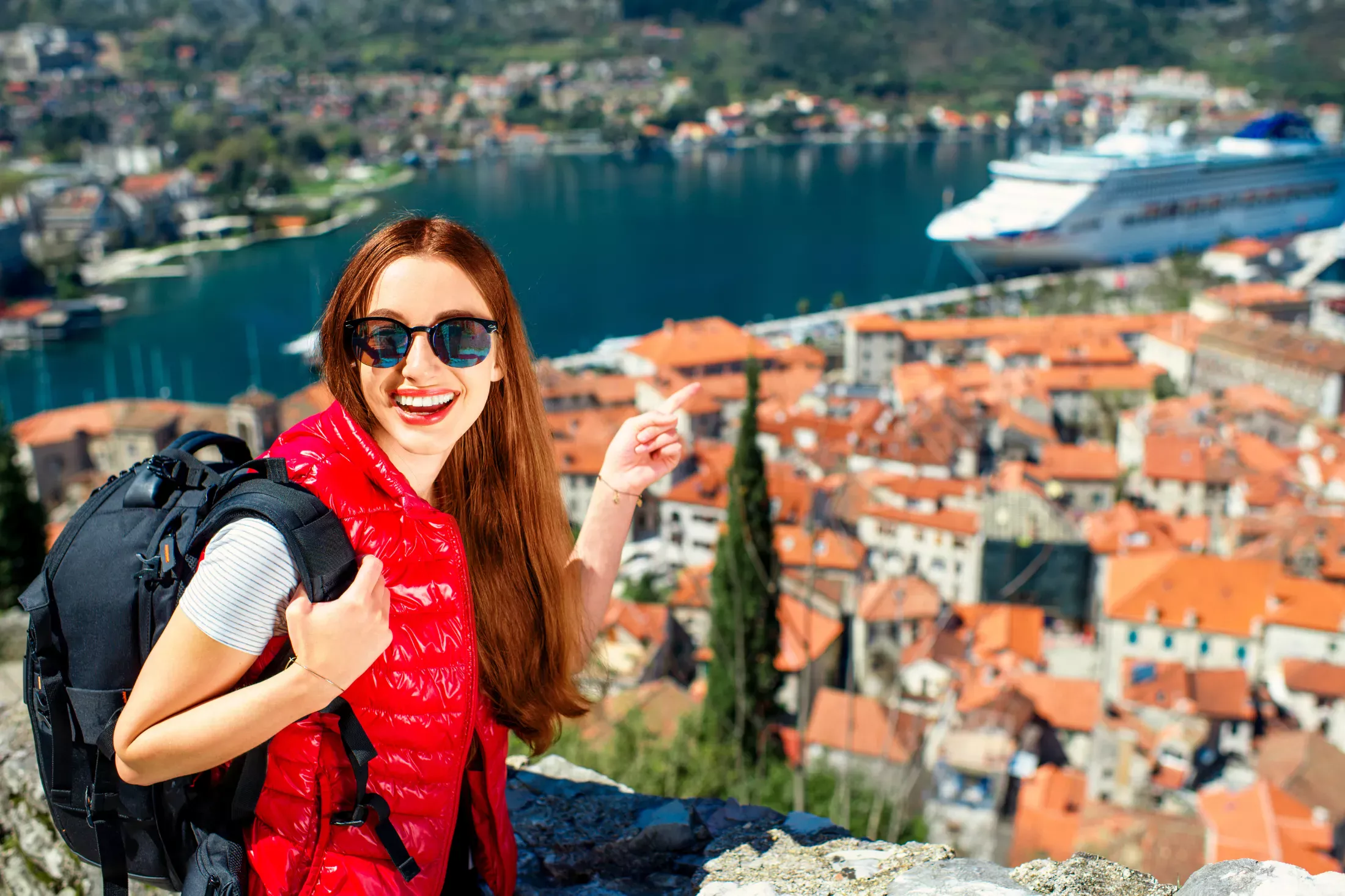
Conclusion
The Old Town Kotor, with its maze of historical landmarks, offers an insight into Montenegro’s past. For history buffs, architectural enthusiasts, or travelers seeking a beautiful European destination, Kotor promises an unforgettable experience. Book a Stay at CUE Podgorica today and visit this marvel at first chance.
Montenegro Travel Advice: Your Guide to Memorable Balkan Adventure
A place in the southwest part of the Balkans, an enchanting fusion of serene lakes and picturesque coastline with majestic mountains towering above, a country just waiting to be explored with our ultimate Montenegro travel advice. Whether you’re a wanderlust-driven soul, a beach lover, or a thrill-seeker, we will help you navigate through the alluring landscapes of Montenegro effortlessly.
Let’s be real, the best place to stay is in the central part of the country in the capital city of Podgorica, as it is a good starting point to reach any other destination. CUE Podgorica stands out as an exceptionally inspiring accommodation choice, attracting a diverse crowd, from business professionals to global wanderers, celebrities, artists, and sports teams alike. Stationed within The Capital Plaza complex, it offers hospitality and comforts of international calibre.
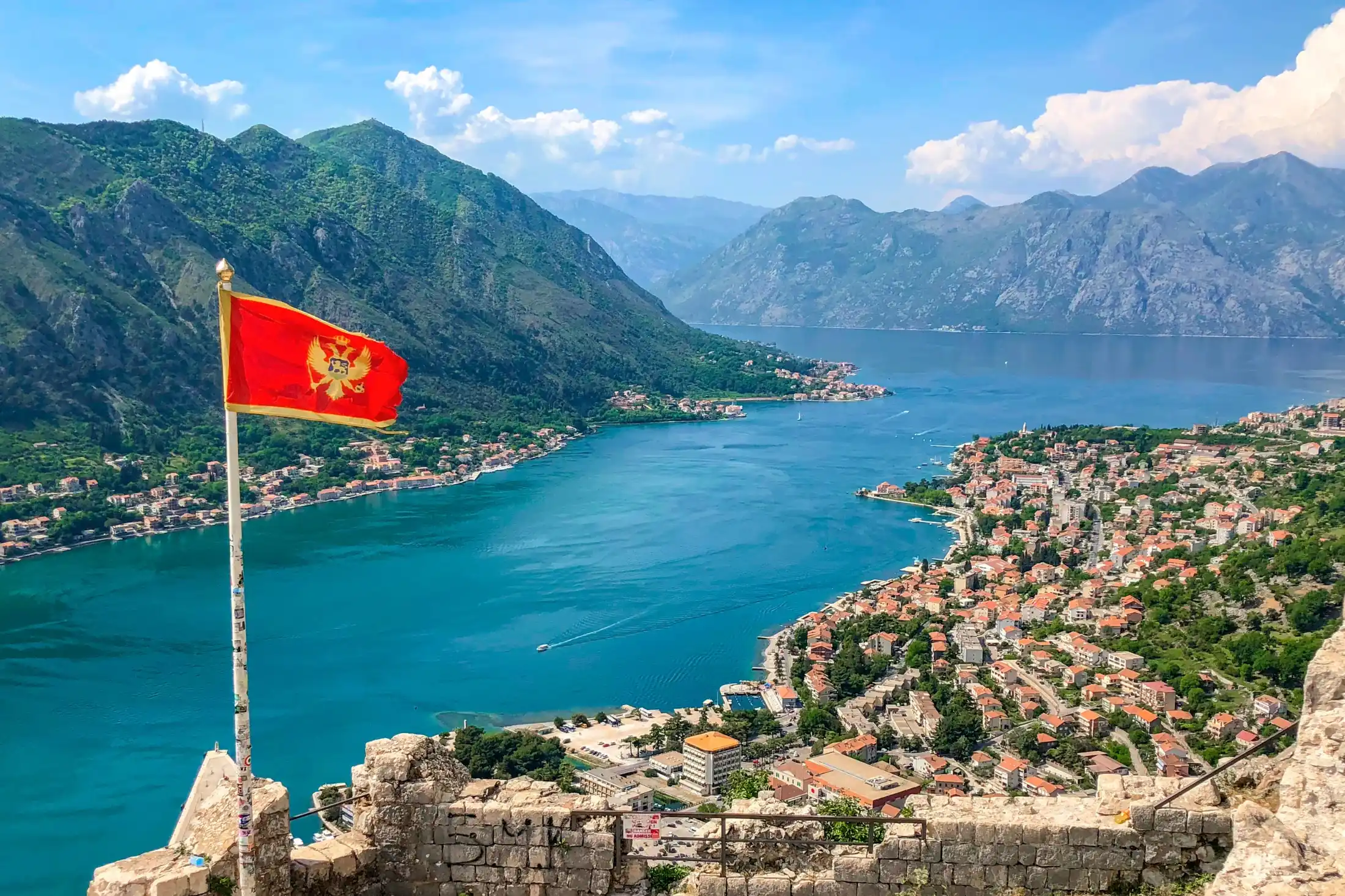

Exploring the Capital: Podgorica
Before venturing out, take the time to explore Podgorica. With a unique blend of old-world charm and modern vibrancy, the city is home to notable landmarks, cosy cafes, and diverse shops. Discover historical monuments like the Clock Tower (Sahat Kula) or the enchanting Ribnica Bridge and relax in the serene atmosphere of its plentiful parks.
Landmarks: A Witness to Time and Change
- Old Town (Stara Varoš):
- Clock Tower: A reminder of the Ottoman period.
- Nemanjići’s Town Ruins: A late 15th-century fortress.
- Skaline (Sastavci):
- A historical and cultural junction at the confluence of the Morača and Ribnica rivers, hosting remnants from the Ottoman era and a popular youth gathering spot.
- Doclea:
- An outer archaeological spectacle that was once a prominent Roman city.
- Church of St. George:
- The oldest church in Montenegro, with its captivating interior frescoes and underground passage network.
- Plantaže Vineyard:
- Europe’s largest single-complex vineyard, renowned for producing the exquisite Vranac wine.
- Niagara Waterfalls on Cijevna River:
- A breathtaking natural spectacle that adds a serene contrast to the city’s lively ambience.
Approximately a 90-minute drive from Podgorica, Kotor is another captivating coastal town, renowned for its stunning bay and well-preserved Old Town and a must-see on our Montenegro travel advice guide. Exploring the cobbled streets, enjoying local cuisine by the bay, and hiking the fortress for a breathtaking view of the Bay of Kotor are essentials. It is a UNESCO World Heritage Site and its bay is brimming with cruise ships in the summer. Going along the shores of Boka Bay, you will encounter numerous charming small towns like Perast, Risan, Herceg Novi, and Tivat. All of them are unique in their way and merit a visit.
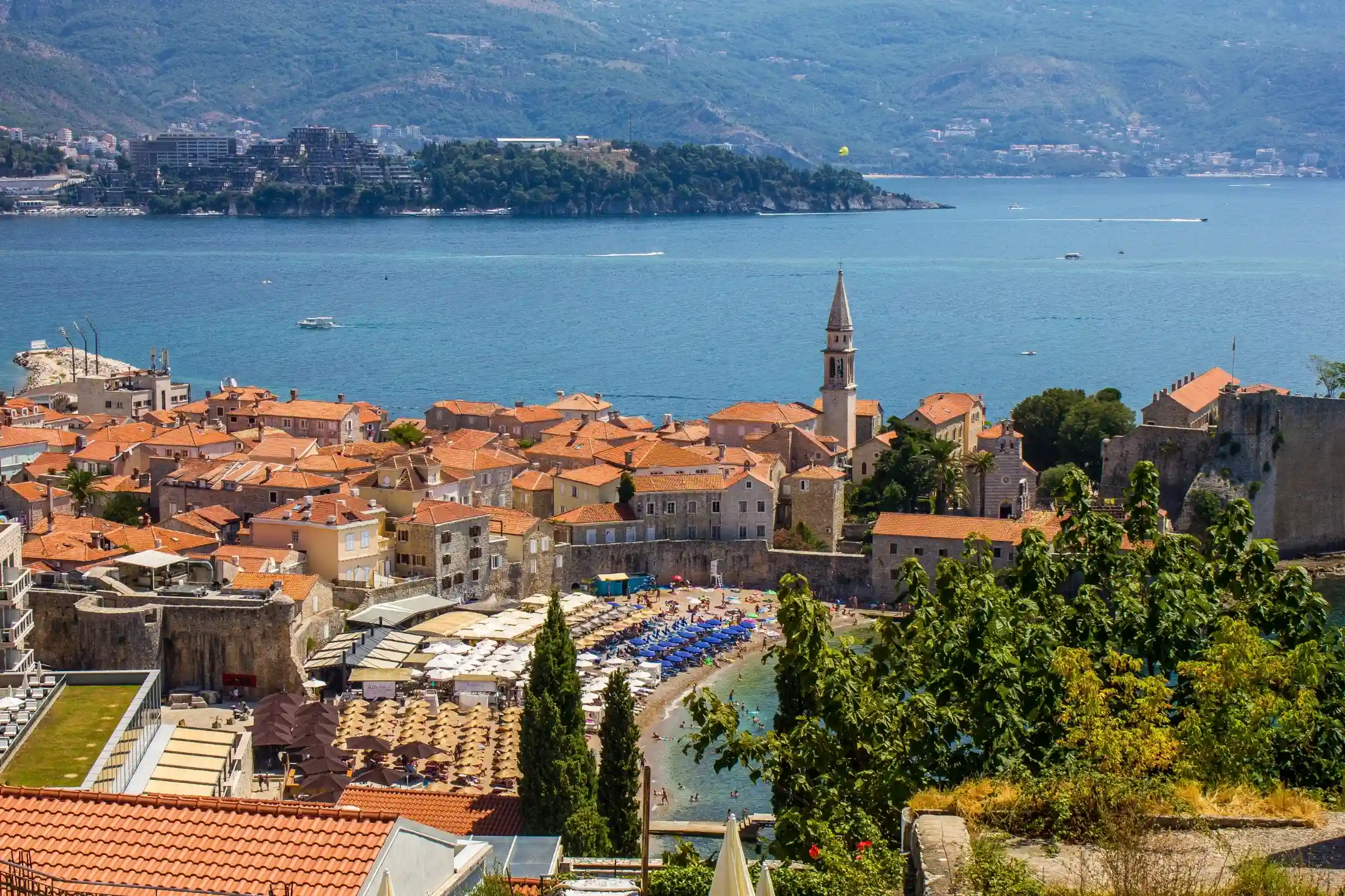
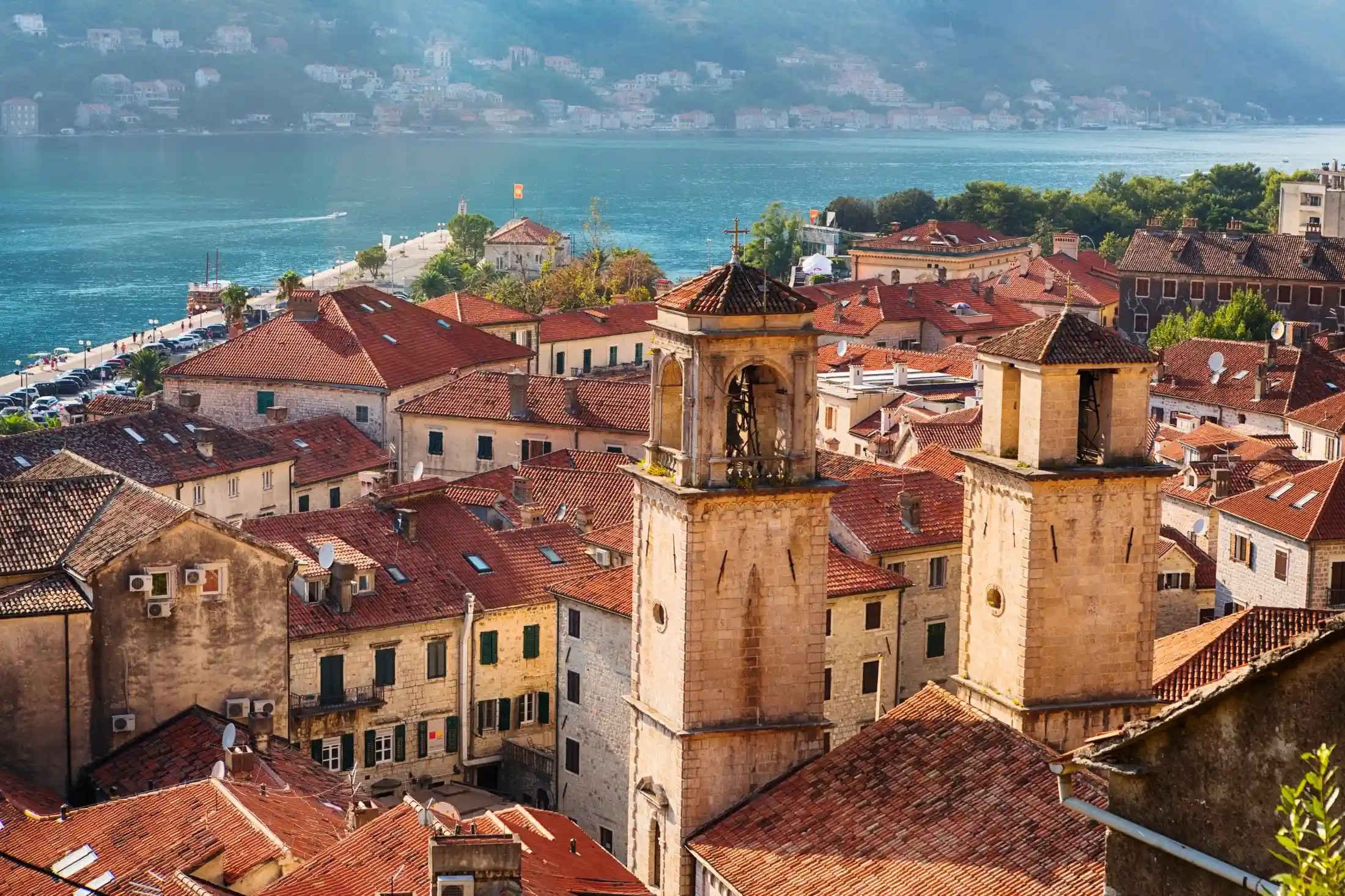
In a journey slightly further down the Montenegrin coast, Bar and Ulcinj present themselves as dazzling displays of the country’s rich history and stunning seascapes. Bar, known for its vibrant port and the entrancing Stari Bar (Old Bar), is a town where the oldest olive tree in Europe resides (believed to be over 2,000 years old). The old town, a museum under the open sky, is a fascinating concoction of ancient ruins and medieval architecture, where each stone seems to narrate tales from a bygone era. Meanwhile, the modern part of Bar offers beautiful beaches, lively bars, and a marina that comes alive with activity during the summer months. A short drive away from Bar is the town of Ulcinj. Famous for its long sandy beaches, including the 12km long Velika Plaža, Ulcinj provides a more laid-back vibe compared to other Montenegrin coastal towns. With its rich history, including remnants of a massive Venetian-inspired castle, and lively nightlife, especially during the summer months, Ulcinj is a splendid destination that encapsulates the diverse essence of Montenegro’s Adriatic coast.
From Podgorica to the Mountain Regions
Embracing the rugged allure of Montenegro’s northern region, one cannot resist the magnetic pull of destinations like Kolašin, Žabljak, Durmitor National Park, National Park Biogradska Gora, and Prokletije National Park. Each of these spots heralds its distinct charm, beckoning travellers to dive deep into the wild, natural landscapes of the country.
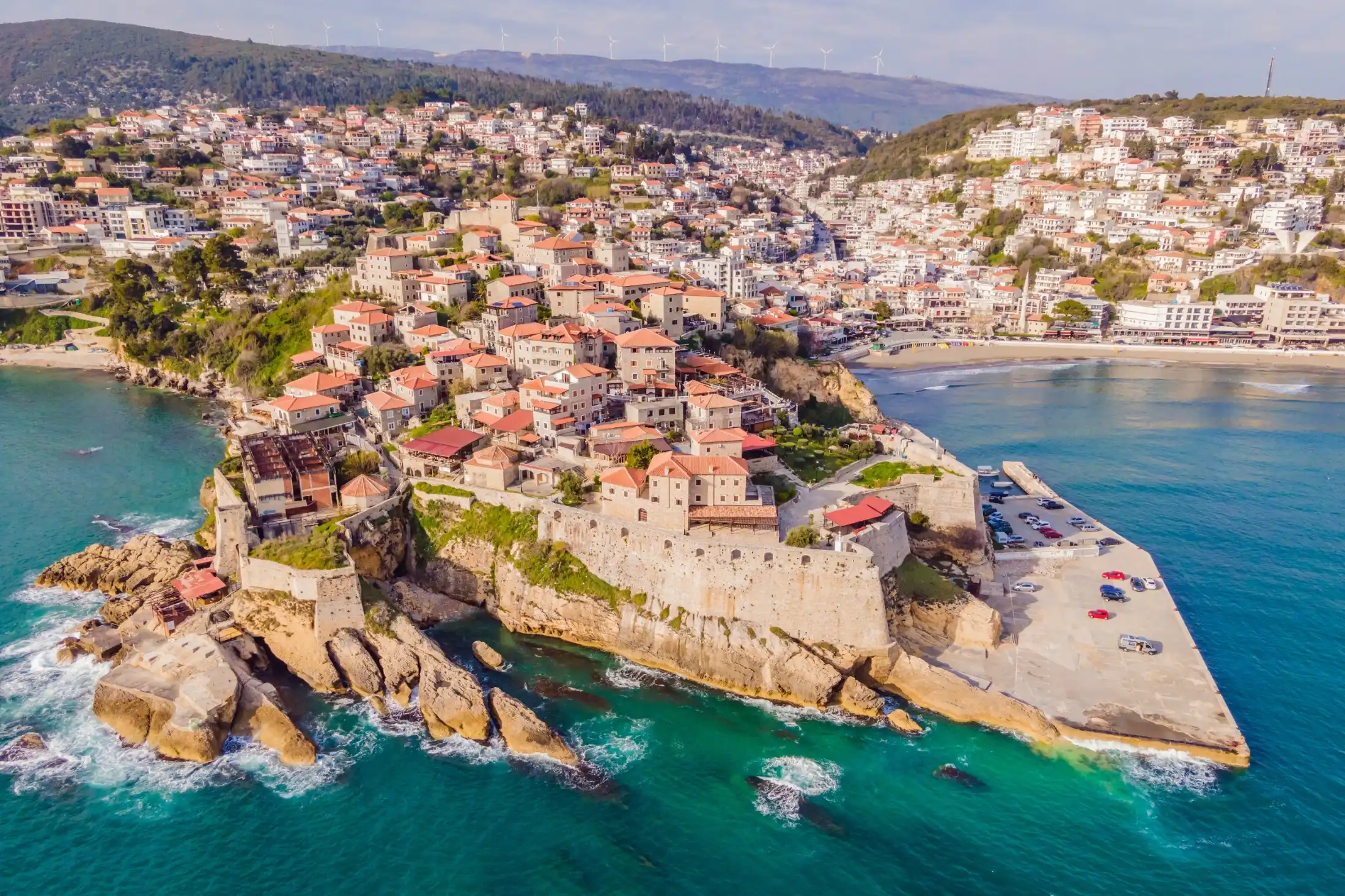
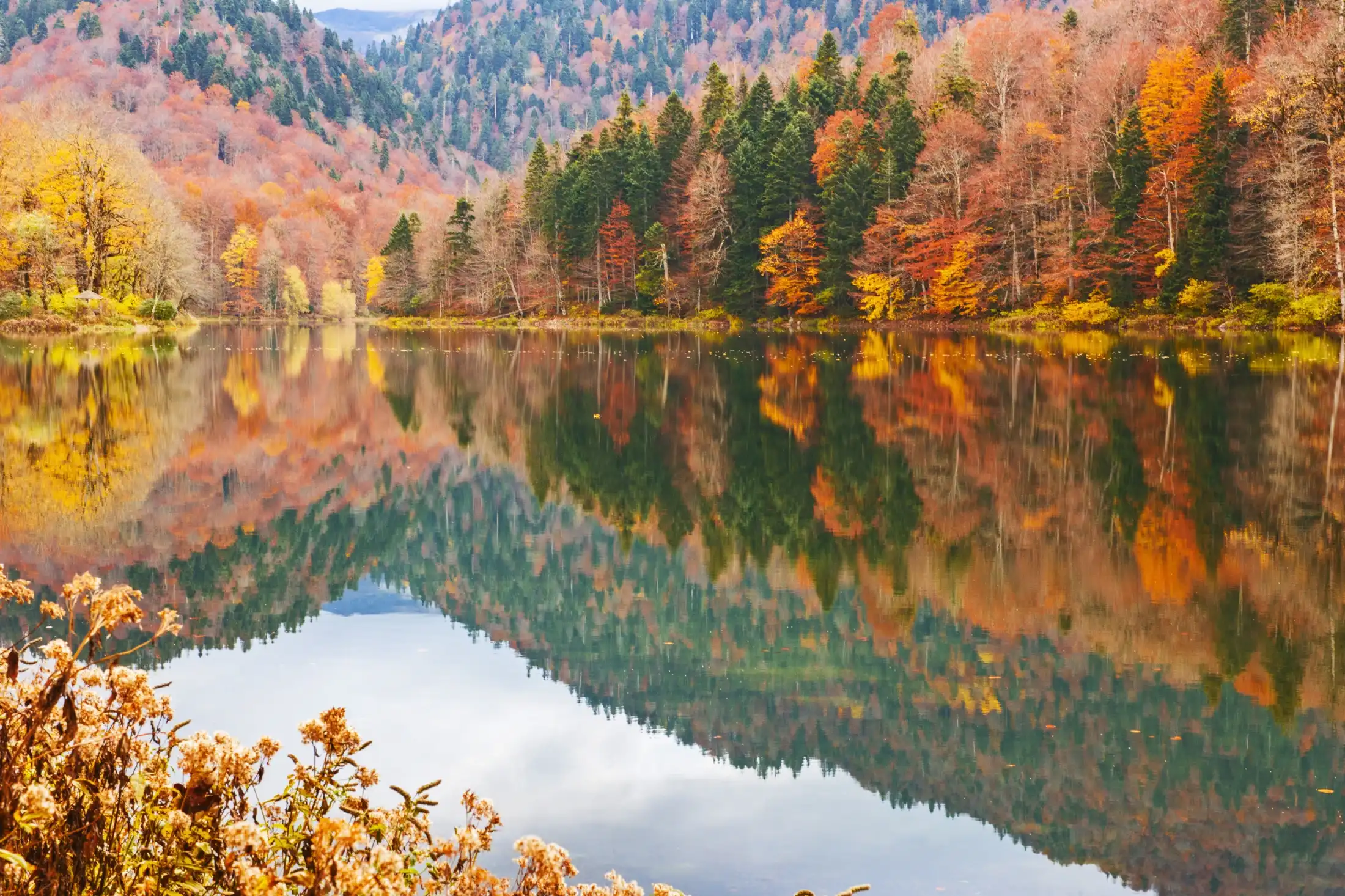
Kolašin, often hailed as Montenegro’s most famous ski resort, offers plenty of activities from skiing in the winter to hiking in the warmer months. It is situated at the foot of Bjelasica mountain, in whose central part National Park Biogradska Gora is located. We recommend visiting Lake Biograd and taking a boat tour along its mirror-like surface. Not far from Kolašin, Žabljak, the highest town in the Balkans, serves as a gateway to the astonishing Durmitor National Park, a UNESCO World Heritage Site, where the ethereal Black Lake and the dramatic Tara River Canyon carve out surreal scenery that imprints upon every visitor’s memory. Adventure enthusiasts will find a haven here with opportunities for rafting, mountaineering, and exploring caves, ensuring a thrilling connection with nature’s raw beauty.
Moreover, the somewhat elusive Prokletije National Park, often referred to as the ‘Southern Alps’, graces the border between Montenegro, Albania, and Kosovo, providing a secluded retreat for those seeking serenity and isolation amid towering peaks and pristine lakes. Hiking trails here are both challenging and immensely rewarding, offering breathtaking vistas and encounters with diverse wildlife, introducing travellers to a quieter, yet equally enchanting, facet of Montenegro.
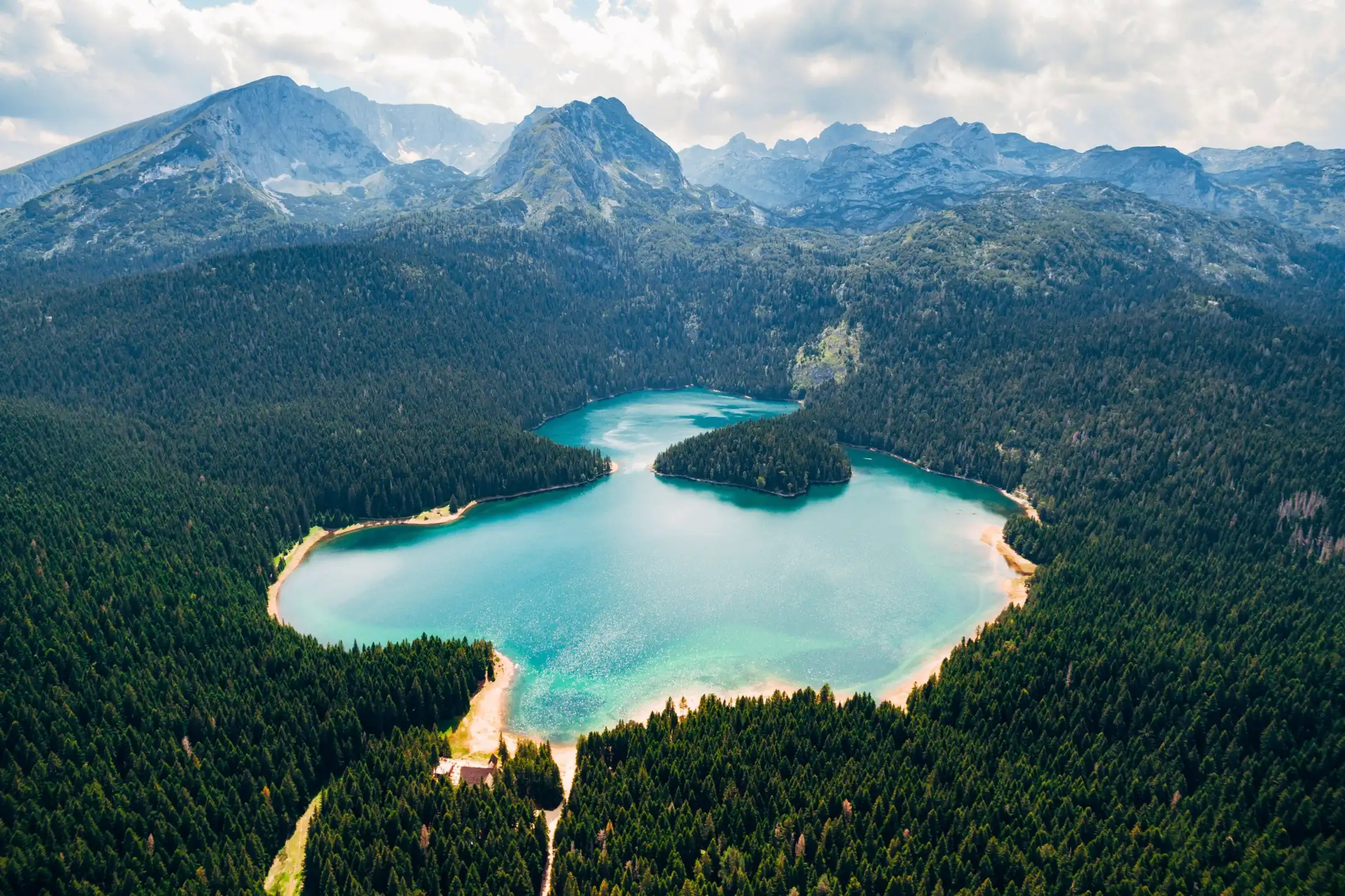
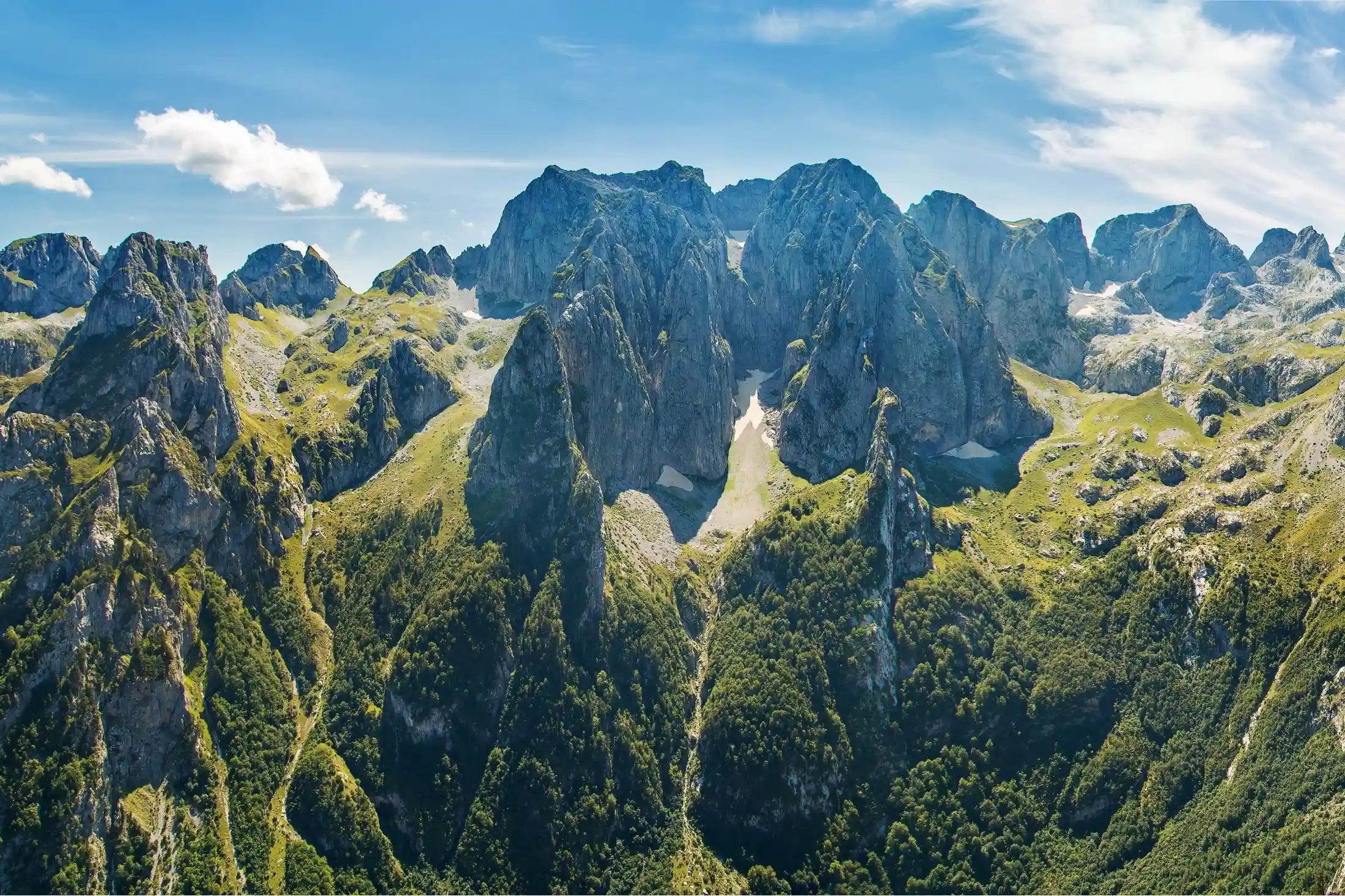
Embarking from Podgorica, Montenegro unrolls a carpet of adventures, from the gently lapping waves of the Adriatic to the echoing serenity of its mountainous terrains, each destination promising its unique charm and experiences. Whether you’re drawn by the allure of coastal towns, the whisper of secluded forests, or the tales of historical cities, Montenegro welcomes you to explore its multifaceted beauty. From mingling in the elegant social spaces within CUE Podgorica to exploring the local culinary and artistic scene, your stay is certain to be sprinkled with diverse, enchanting moments that echo the Montenegrin spirit. With our guide and Montenegro travel advice at your fingertips, starting your journey from Podgorica paves the way to a blend of activities and experiences within the country.
CUE Podgorica Named as Montenegro’s Leading Hotel at the World Travel Awards
CUE Podgorica, a hotel renowned for its dedication to exceptional hospitality, has been honored with the “Montenegro’s Leading Hotel 2023” award at this year’s World Travel Awards.
The prestigious award, known as the “Oscar of the travel industry,” is globally recognized as one of the most significant accolades in the tourism and hospitality sectors.
“This recognition is the culmination of the efforts of our dedicated team that consistently strives for excellence in hospitality. The fact that we are acknowledged as industry leaders inspires us and obliges us to enhance the quality of service. For all these reasons, I must emphasize how proud I am of all the team members at CUE Podgorica,” stated Slavica Stojković, the general manager of CUE Podgorica.
Stojković also highlighted the importance of this recognition, not only for CUE Podgorica but also for the Capital city, considering the competition included hotels from renowned global brands present on the Montenegrin coast.
The World Travel Awards is a prestigious global organization aimed at recognizing and rewarding excellence in all sectors of the travel, tourism, and hospitality industry. This year’s award ceremony took place in Batumi, Georgia.

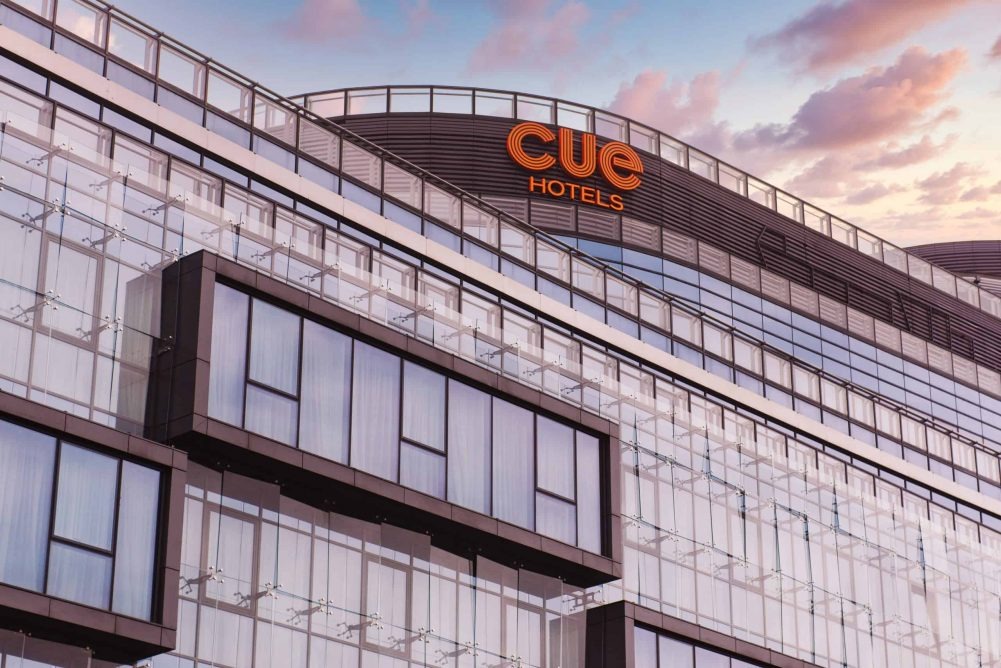
Portraits of the royal family of Great Britain in the CUE Podgorica hotel

The exhibition “God Save the King” by the artist Laura Cremene is now open at the CUE Podgorica hotel gallery. Laura skillfully captures the spirit of the British royal family in her portraits.
The exhibition was inaugurated by the Deputy Ambassador of Great Britain, Sarah Pilbeam, who stated that Laura’s masterpieces are evidence of the power of art in preserving history and nurturing cross-border connections.
“Her ability to bring the splendour of the coronation to life right here in Montenegro is a testament to the universal appeal of the royal family and the rich cultural ties between our nations,” Pilbeam remarked.
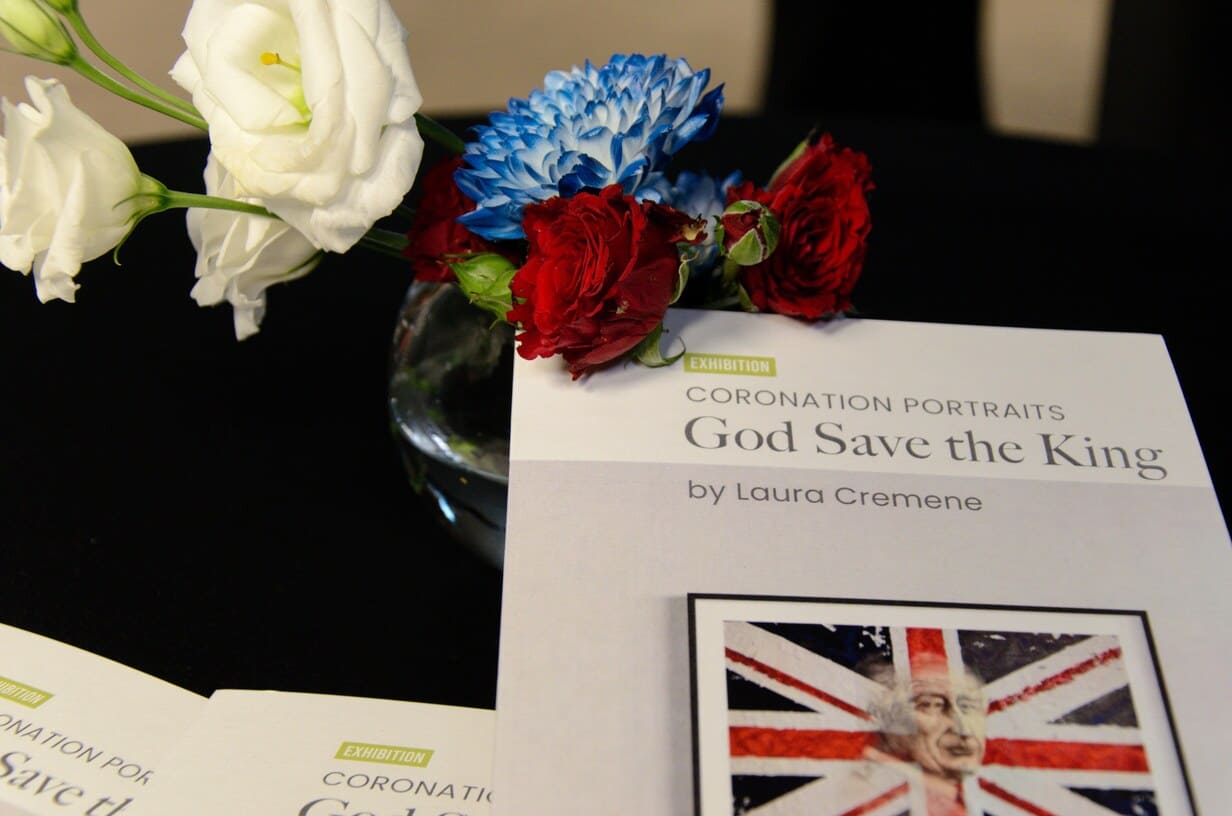

Trained as a fashion designer in Romania, Belgium, Italy, and the United Kingdom, Laura proudly holds two master’s degrees in fashion design and technology. Her artistic work reflects an informal approach to illustrating dynamic portraits using combined techniques.
The main inspiration for this exhibition, as emphasized by the author, was Queen Elizabeth II.
” It all began with a portrait of the Queen, a symbol of continuity amidst change. Her ability to uphold traditions and values while actively participating in the technological and socio-political transformations of her reign fascinated me,” said Laura. ” The British Monarchy, like life itself, is in a state of perpetual evolution. The portraits you see before you are a testament to this transformation.”
Vučić Ćetković, Director of the Museums and Galleries of Podgorica, welcomed the attendees, expressing satisfaction that Podgorica has another space showcasing artists from around the world.
“Laura Cremene has already attracted the attention of our creative community with her work in the fashion. With this exhibition, we have another opportunity to see and experience her creative ideas and to welcome her into the Podgorica art scene. The British royal holds a unique position that inspires and fascinates people and societies all over the world. For Laura Cremene, this fascination and appreciation motivates creative ideas and unique expression, which makes this exhibition special and authentic in many ways,” Vučić Ćetković said.
The “God Save the King” exhibition offers visitors the chance to immerse themselves in portraits of the British royal family and experience Laura’s extraordinary ability to capture the spirit and evolution of these fascinating personalities. We invite all art enthusiasts to come and enjoy this exceptional portrait collection of the royal family until the beginning of October at the CUE Podgorica hotel.

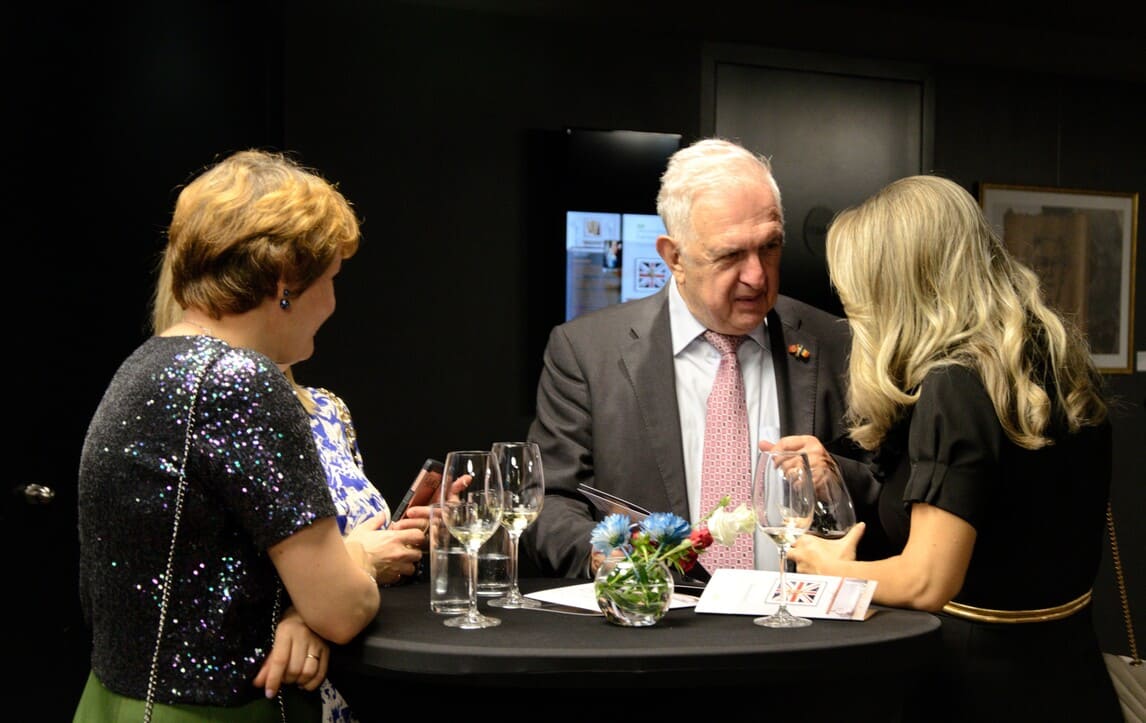

From Peaks to Valleys: An All-In-One Guide to Montenegro National Parks
Montenegro National Parks stand as a testament to the country’s unparalleled natural beauty, showcasing a diverse array of landscapes, from soaring peaks and deep canyons to serene lakes and dense forests. As one delves into the heart of Montenegro, they are greeted by the majesty of five distinct parks, each offering a unique window into the country’s ecology. These verdant sanctuaries, though varying in terrain and experiences, collectively paint a picture of Montenegro’s commitment to preserving its natural treasures for generations to come. Join CUE Podgorica as we delve into these marvels of nature.
Montenegro National Parks: The Legacy of Lovćen Mountain
Nestled within an expansive 6,220 hectares, the park boasts a diverse elevation that ranges from a modest 939 meters to the soaring heights of 1,749 meters above sea level. Dominating landscapes are the majestic peaks of Štirovnik, which proudly stands at 1,749 meters, and Jezerski vrh, with its impressive altitude of 1,657 meters. Since 1952, Lovćen has been honored with the prestigious title of a National Park, a testament to its unparalleled natural beauty and significance.
Places to visit near the Heart of Lovćen
The journey to Lovćen is incomplete without visiting Cetinje, Montenegro’s historic capital. Nestled on the slopes of the majestic Lovćen mountain, Cetinje shows Montenegrin culture and history. Often referred to as the “Capital of Culture”, it offers travelers a glimpse into Montenegro’s soul with its plethora of museums.
Ivanova Korita, a picturesque settlement, is perfect for a family day out with activities that cater both young and old.
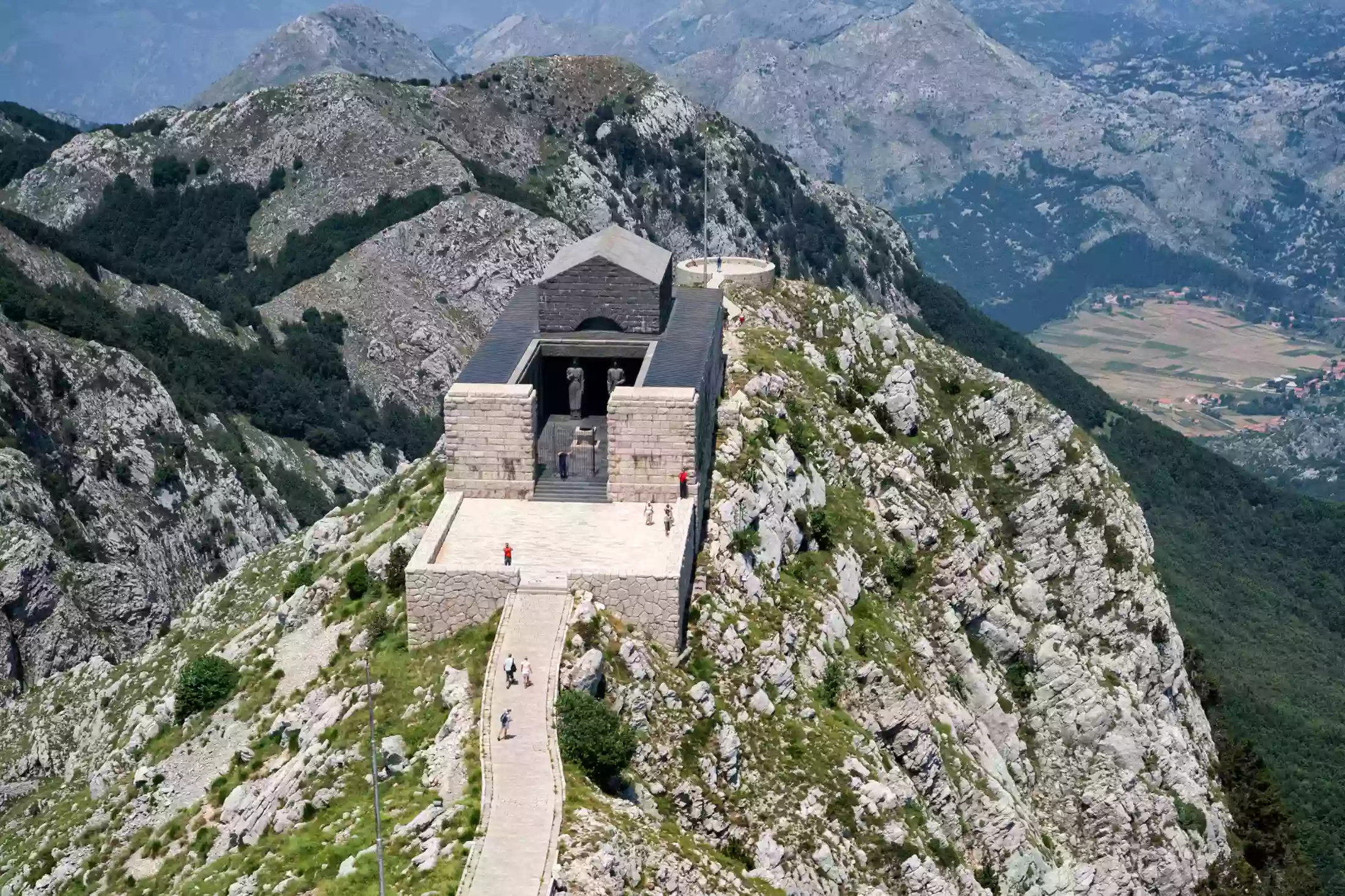
The Crown Jewel: Mausoleum of Petar II Petrović Njegoš
By visiting Jezerski Vrh you will be met with Montenegro’s pride – the mausoleum of Petar II Petrović Njegoš. An ascent of 461 steps will lead you to panoramic views that are simply unparalleled. From this vantage point, one can gaze upon the Bay of Kotor, Skadar Lake, and on clear days, the distant Adriatic Sea. In front of the mausoleum, the sculptures by renowned artist Ivan Meštrović, depicting the strong Montenegrin women stand tall. Inside, the mausoleum features a vault adorned with a mosaic of 200,000 gilded tiles.
Lovćen, with its breathtaking vistas and profound history stands as a beacon of Montenegrin pride. As you leave, the spirit of Lovćen will linger, prompting a promise of return.
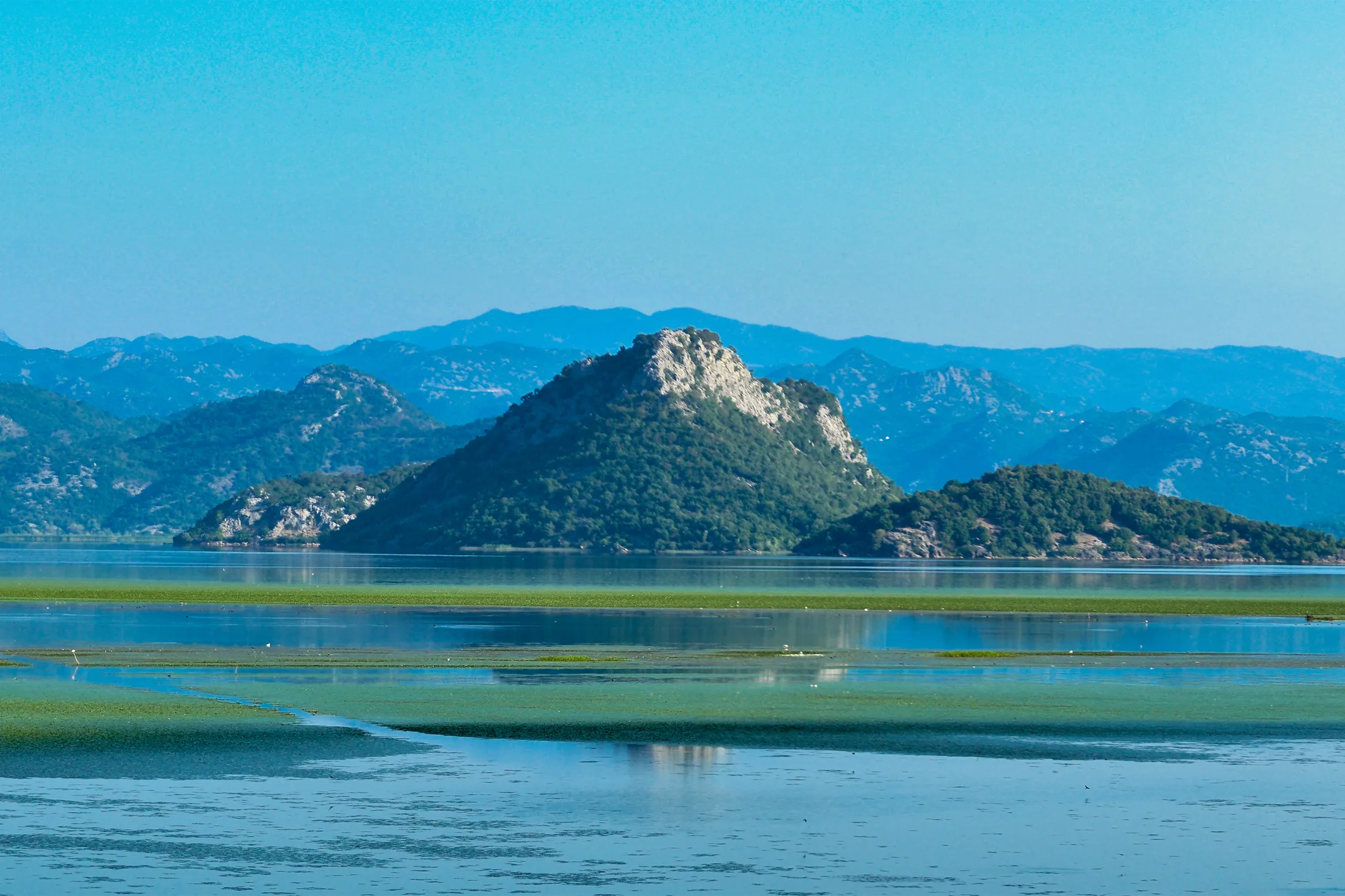
Montenegro National Parks: Skadar Lake
Nestled between Montenegro and Albania, Skadar is the largest lake on the Balkan Peninsula and a hub of biodiversity and cultural richness.
With a seasonal expanse ranging from 370 km² in the summer to a sprawling 540 km² in the winter, the lake is ever-changing and ever-mesmerizing.
Activities on the lake
Montenegro National Parks offer a plethora of activities, and Lake Skadar is no exception. Start your morning witnessing the tranquil dance of green water lilies. Then, if you’re feeling adventurous, in the heart of Montenegro’s national parks, glide across pristine waters with stand-up paddleboarding or embark on enchanting boat trips to historical islands, where ancient monasteries and fortresses await, including the captivating former Turkish prison castle Grmožur.
For those who prefer land-based adventures, the park offers great terrains for hiking and trekking. Moreover, with its 280 bird species, including the rare Dalmatian pelican, Skadar is a paradise for bird enthusiasts, especially during the prime bird-watching seasons of autumn and winter.
A Dip into Culture and History
Lake Skadar isn’t just about nature. It’s a custodian of Montenegrin culture and history.
Rijeka Crnojevića is perfect place to visit when near Lake Skadar. You’re sure to stumble upon remnants of a time gone by. After a long day, indulge your taste buds. Local taverns welcome you with dried carp, smoked bleak fish, and glasses of local wine. The pan-seared carp with prunes and apples, is a must-try!
Conservation of Montenegro National Parks
Skadar Lake National Park holds immense ecological significance. Designated as an Important Bird Area (IBA) in 1989, it was also enlisted in the Ramsar List of Wetlands of International Importance in 1995. As part of Montenegro National Parks, it stands as a testament to the country’s commitment to preserving its natural heritage.
As you embark on your journey exploring Montenegro National Parks, let Skadar enchant you with its tales and landscapes.
Montenegro National Parks: Biogradska Gora
Nestled between the flowing Tara and Lim rivers, Biogradska Gora National Park stands as an example to nature’s splendor in the heart of Montenegro’s mountainous Bjelasica region. With an expanse of over 54 square kilometers, it holds the distinguished title of being one of Europe’s last three primeval forests. A sanctuary that is both ancient and awe-inspiring, it offers visitors a glimpse into a world untouched by time.
Emerald Waters and Verdant Forests
Spanning 5,650 ha (13,961 Acres), Biogradska Gora is the smallest national park in Montenegro, yet its significance is monumental. The primeval forest reserve here stands as a living museum, with trees that have witnessed half a millennium. The park’s dedication to preservation is evident in its history, with protections dating back to 1878 when King Nikola prohibited commercial exploitation of its precious forest.
One of the significant attractions of this Montenegro national park is Lake Biograd. As the largest of the park’s six glacial lakes, its serene waters mirror the dense forests and mountain peaks which are surrounding it. The shores of Lake Biograd provide either adventure or relaxation to seasoned hikers or those looking for a tranquil retreat.
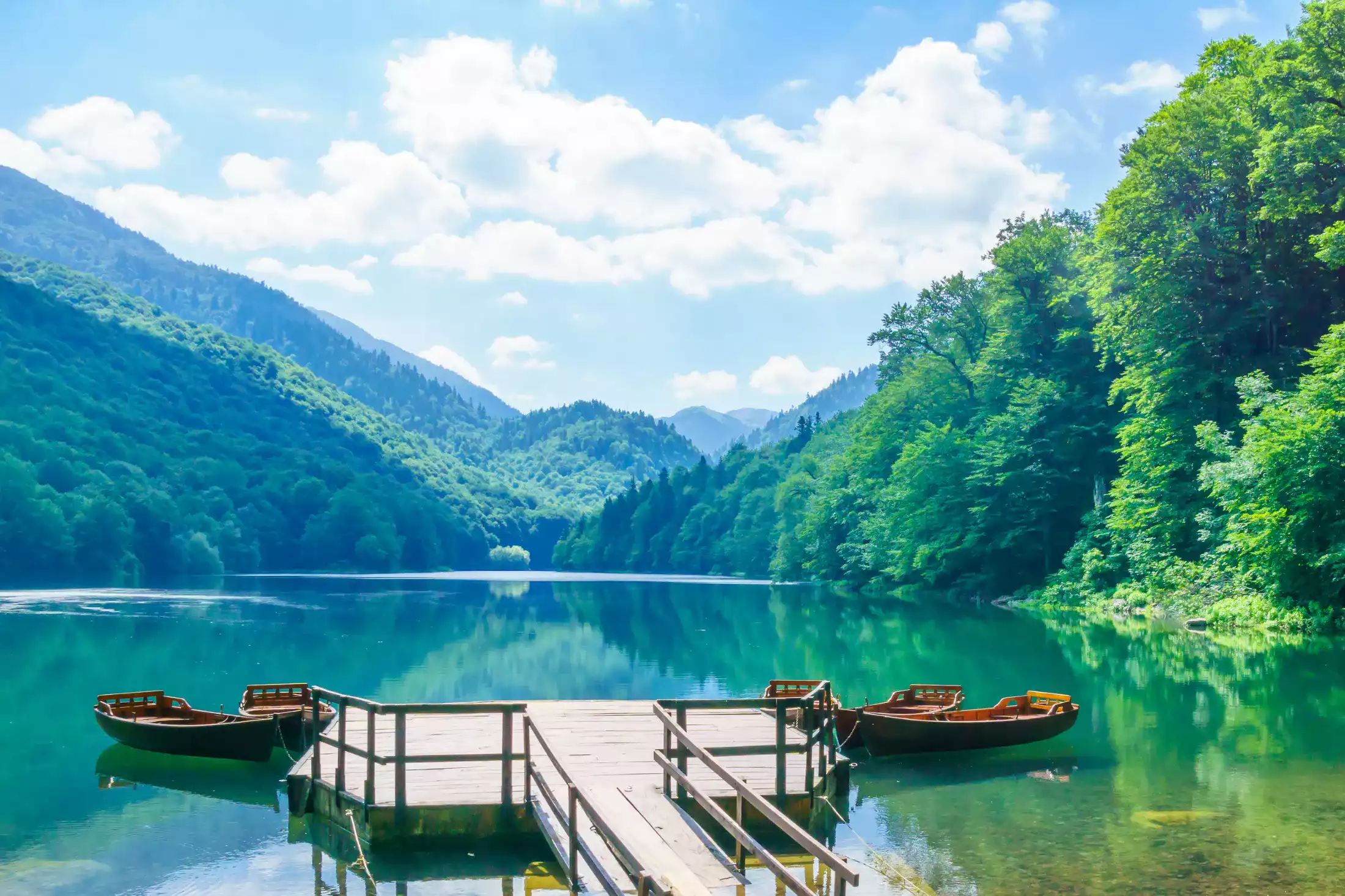
Activities in the park
While many Montenegro national parks offer an array of activities, Biogradska Gora stands out for its diversity. Here you can try anything ranging from mountain biking and hiking, to water activities on the the shores of Lake Biograd, such as kayaking and boating.
For those eager to experience the national food of the region, nearby eco katuns serve traditional dishes like “kačamak” paired with homemade sour milk, providing an authentic Montenegrin experience.
Biogradska Gora National Park is an experience that encapsulates the heart and soul of Montenegro national parks. Rich in history, biodiversity, and natural beauty, it beckons travelers to enjoy its timeless charm. Whether you’re seeking adventure, tranquility, or a bit of both, this park promises a journey you won’t soon forget.
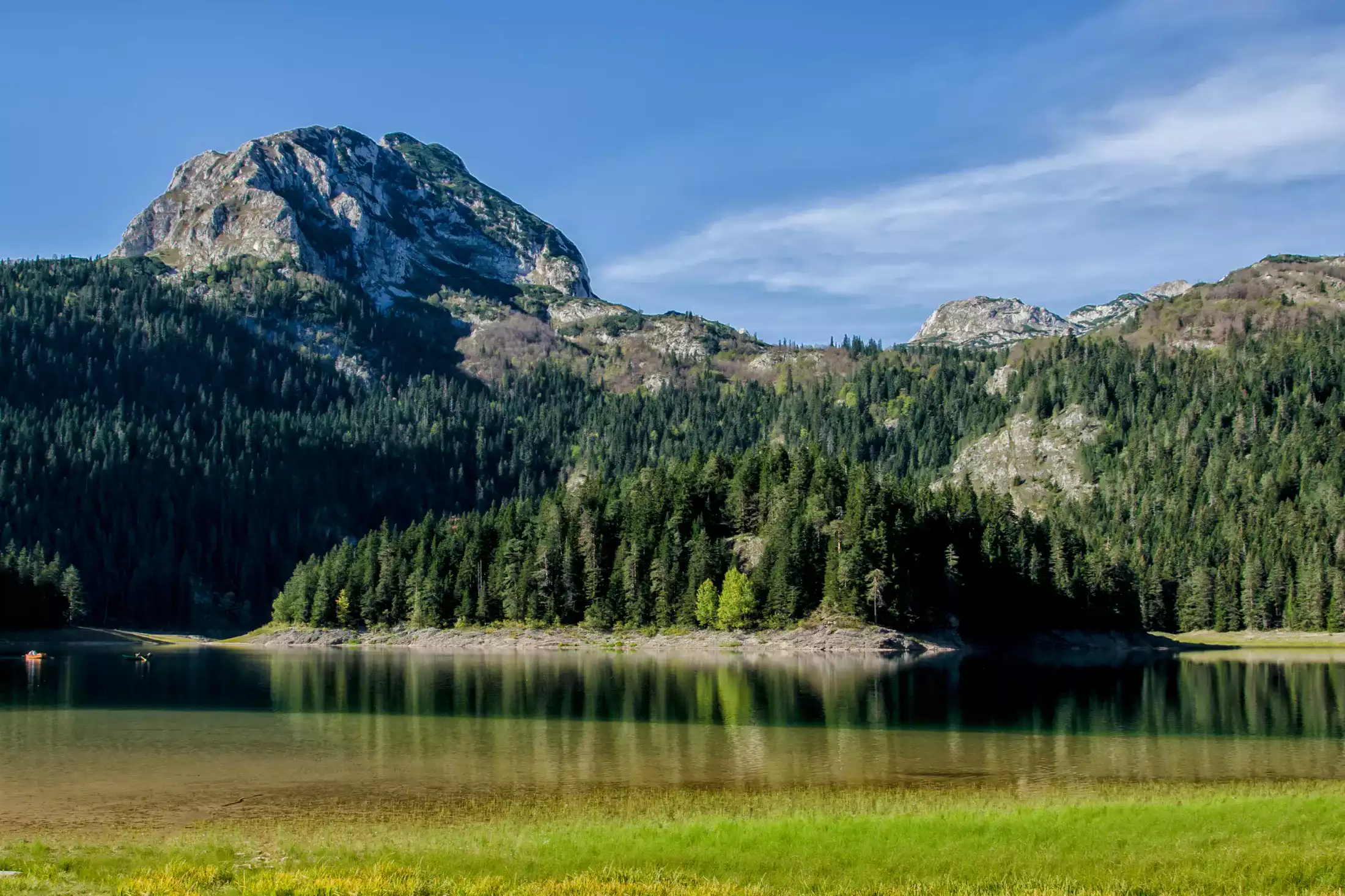
Montenegro National Parks: Durmitor
Situated in the heart of the Dinaric Alps, the Durmitor National Park is one of Montenegro’s most beautiful natural splendors. Home to the majestic mountain of Durmitor with over fifty peaks casting shadows over the land, this UNESCO World Heritage site offers an array of experiences.
The Mesmerizing Landscape
From the towering peak of Bobotov Kuk, standing tall at 2,523 meters, to the mesmerizing depths of the Tara River Gorge, Europe’s deepest gorge, Durmitor unfolds as a canvas of contrasts. The region’s 18 glacial lakes, often termed as “mountain eyes,” sparkle with pristine clarity, offering tranquil spots for reflection and relaxation.
Adventures in the park
Adventure enthusiasts are spoiled for choice here. Whether it’s rafting along the Tara River, exploring the mysteries hidden within the Ice Cave, or canyoning through canyon, Nevidio, Durmitor promises an adrenaline rush at every turn.
Beyond the natural wonders, Durmitor is also a land steeped in history and myth. The ancient medieval tombstones whisper tales from the past, while legends speak of the healing properties of the Savina Water Spring.
The heart-throbbing zipline across the Tara Canyon and the scenic cable car ride to Savin Kuk add another layer of excitement to this multifaceted national park.
A Haven for Flora and Fauna
While Durmitor’s landscapes captivate the eyes, its biodiversity engages the heart. The park is home to a myriad of species, including the endangered Danube Salmon. And with its unique blend of Mediterranean and alpine microclimates, it’s no wonder that Durmitor was honored with the UNESCO World Heritage status.
Truly, amidst all the activities and adventures, take a moment to just breathe in the fresh mountain air and let the beauty of Durmitor National Park sink in, this gem of Montenegro National Parks is not just a destination; it’s an experience waiting to be lived.
Montenegro National Parks: Prokletije
Deceptively named as “The Damned,” Prokletije National Park stands in stark contrast to its nomenclature. Tucked away in Montenegro’s northeastern corner, this park reveals itself as a paradise for unparalleled adventure. Dubbed the “Alps of the South of Europe,” it remains one of the most untapped wonders within Montenegro national parks.
Covering an area of 1,660 hectares, Prokletije showcases the zenith of Montenegro’s natural grandeur. It’s where the country’s highest peak, Zla Kolata, stands mightily at 2,534 meters above sea level, challenging mountaineers with its altitude.
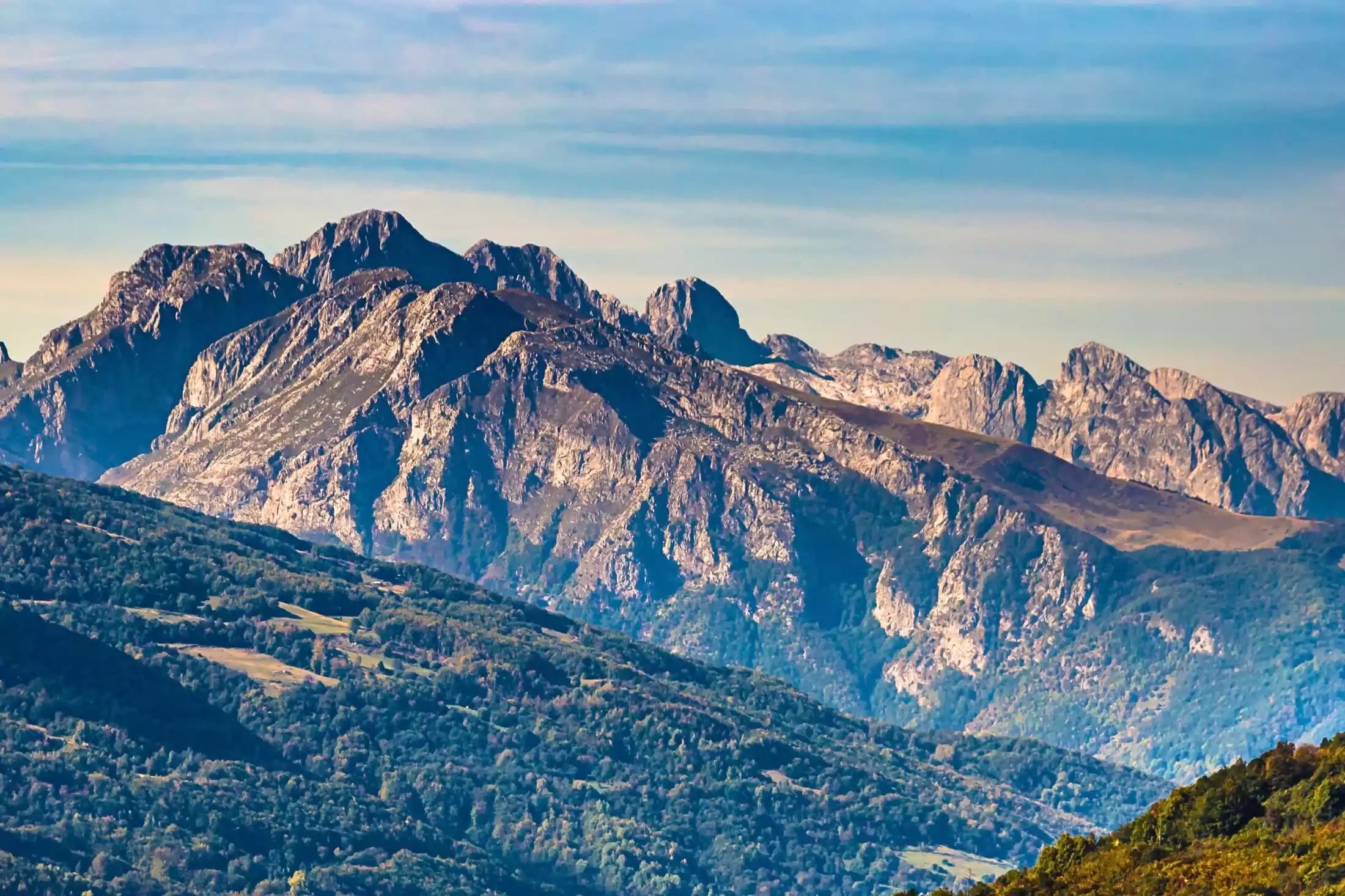
Activities on the mountain
With over 20 peaks surpassing 2,500 meters, and adding the Grlja River’s canyon to the mix the park offers a thrilling arena for those daring enough to navigate its terrain.
Beyond its imposing peaks and gorges, Prokletije National Park boasts tranquil spots, epitomized by the Lake Hrid or the Lake of Happiness. This heart-shaped lake, besides being a natural wonder, is also home to legends of forest fairies. Legend has it that this lake is imbued with a magical charm that grants wishes.
The tales of romantic proposals near the Ali Pasha’s springs and the binding power of a “yes” uttered there only add to the park’s enchantment.
As the youngest national park in Montenegro, Prokletije has over 1,700 plant species making it heaven for anyone interested in botany.
Diving deep into the heart of the Balkans, the Montenegro National Parks reveal many wonders which few corners of the world can rival with. Each park shows Montenegro’s raw and untamed beauty in a different way. Our nation’s soul rests in these sanctuaries, with every glacial lake and soaring peak singing a song of ancient traditions and landscapes. So what are you waiting for, book a stay at CUE Podgorica and start planning a thrilling adventure.
Annual ticket for all five National Parks is 13.50 euros and you can buy it here.



